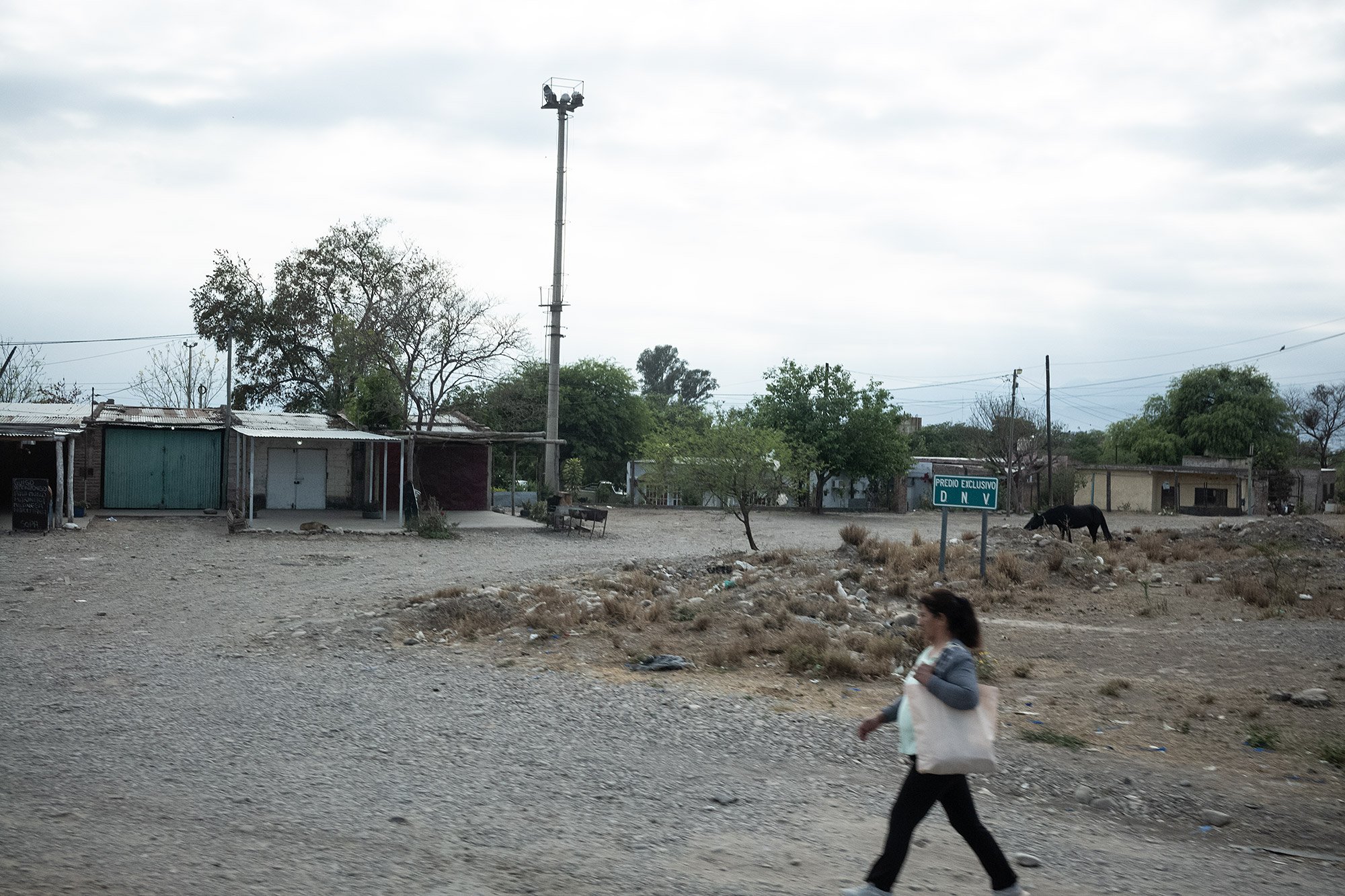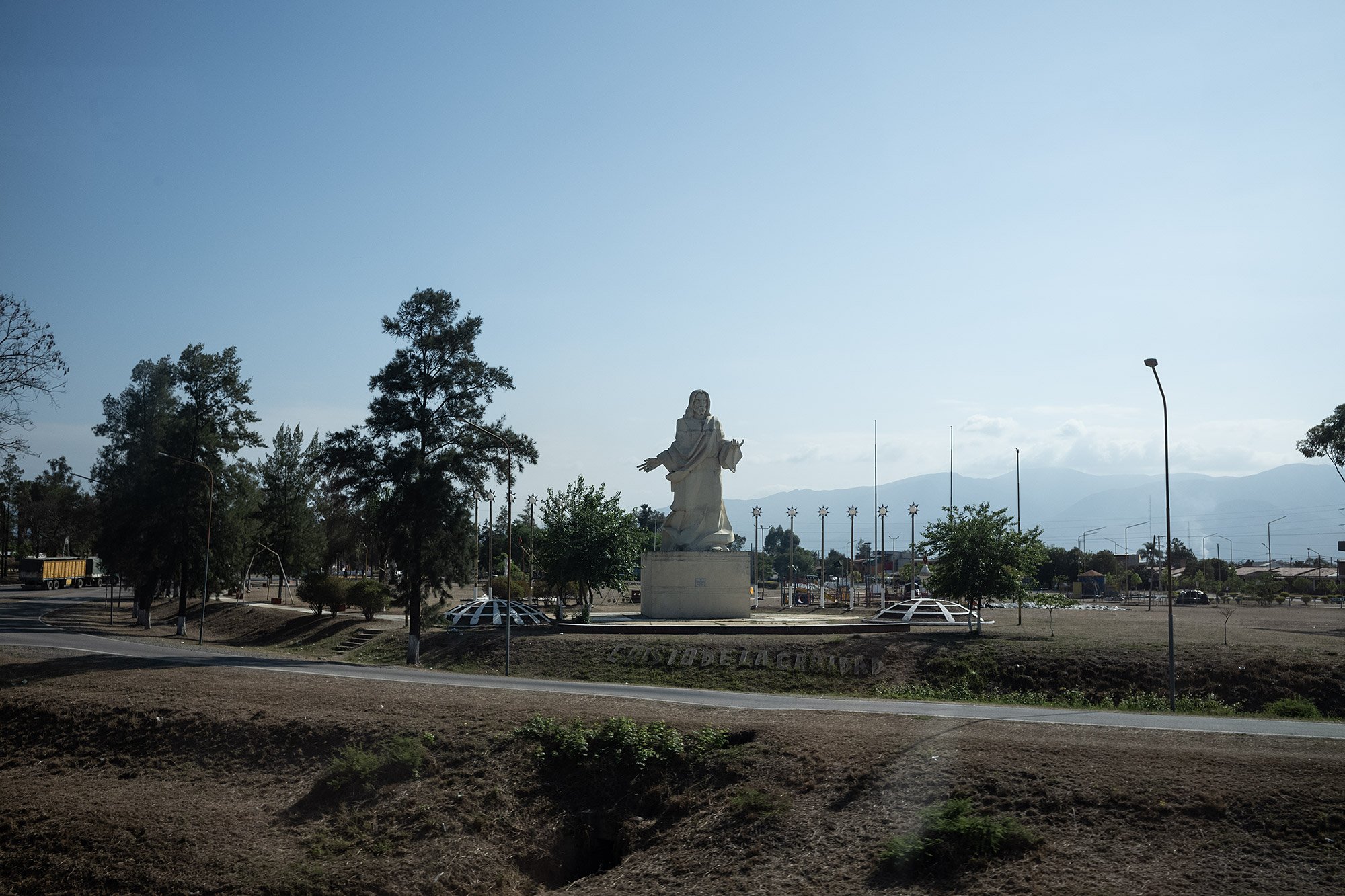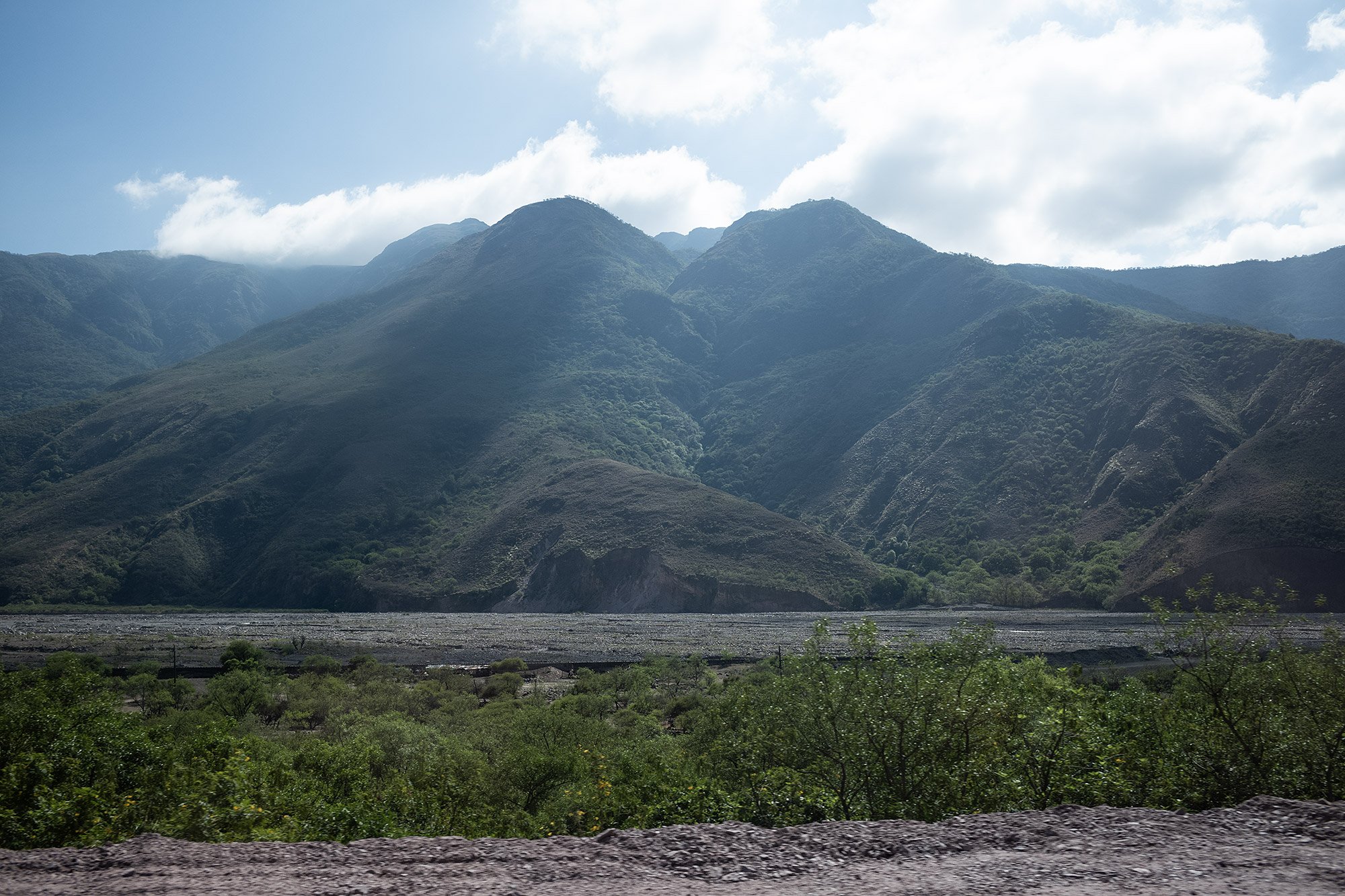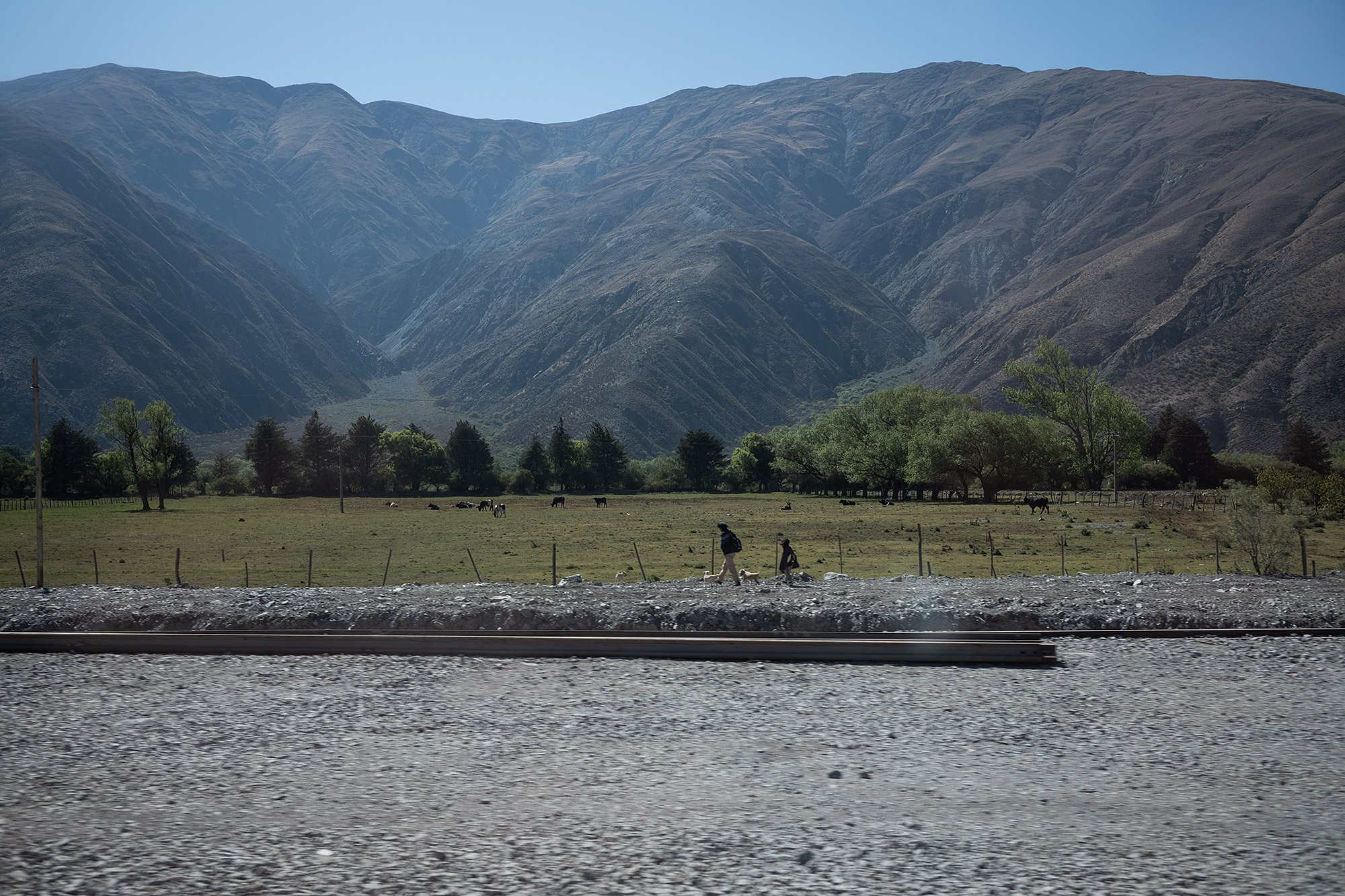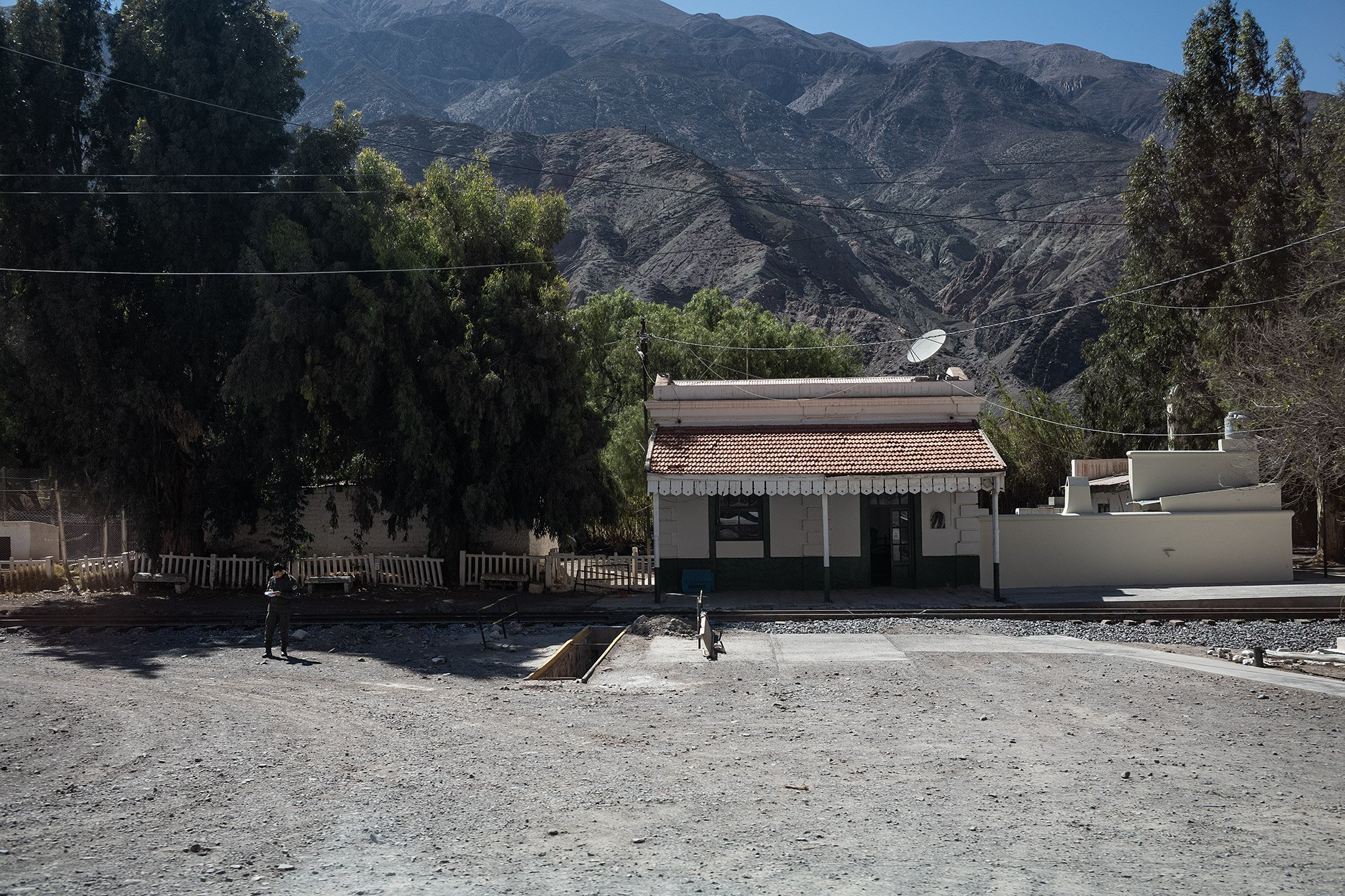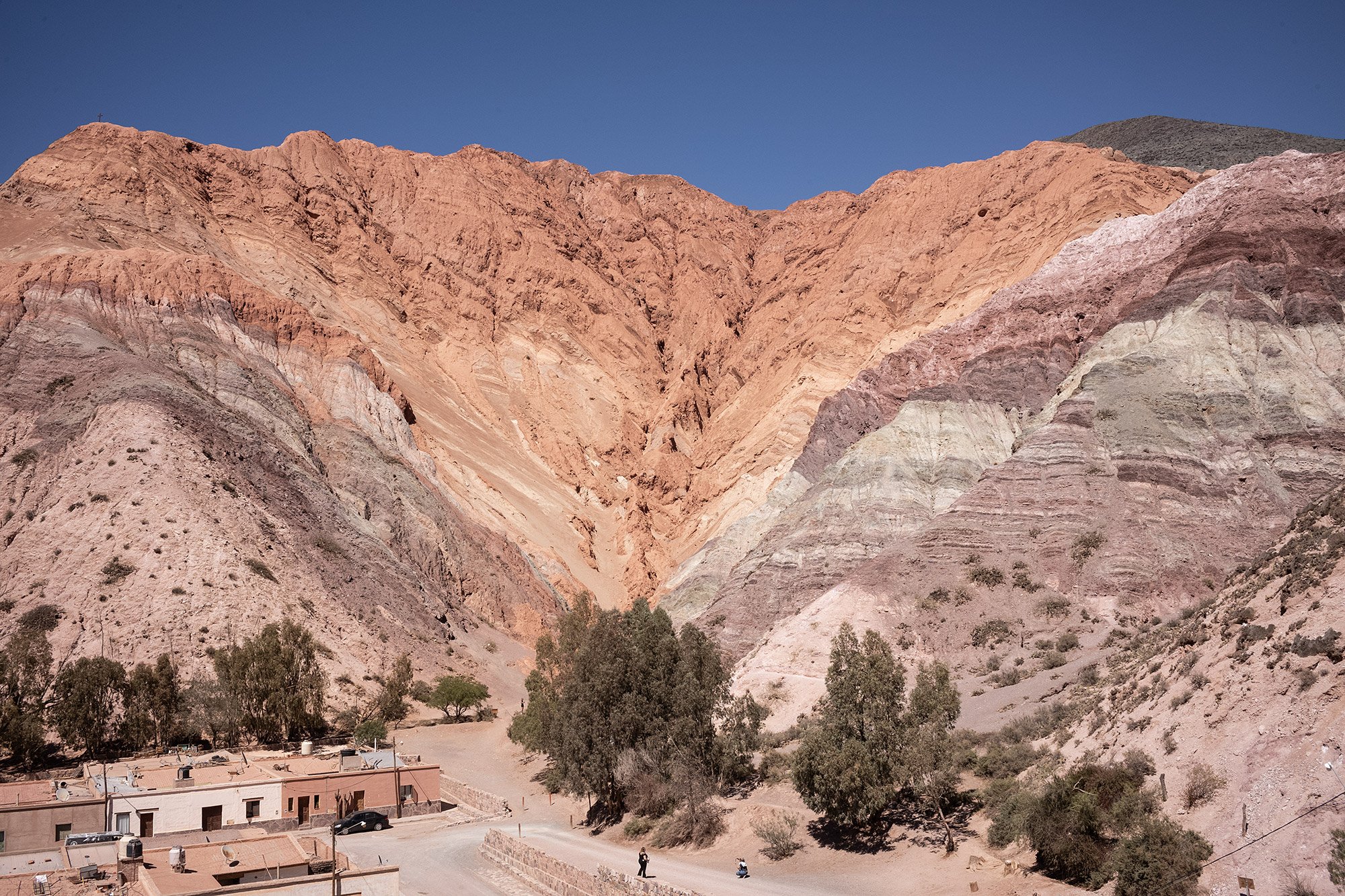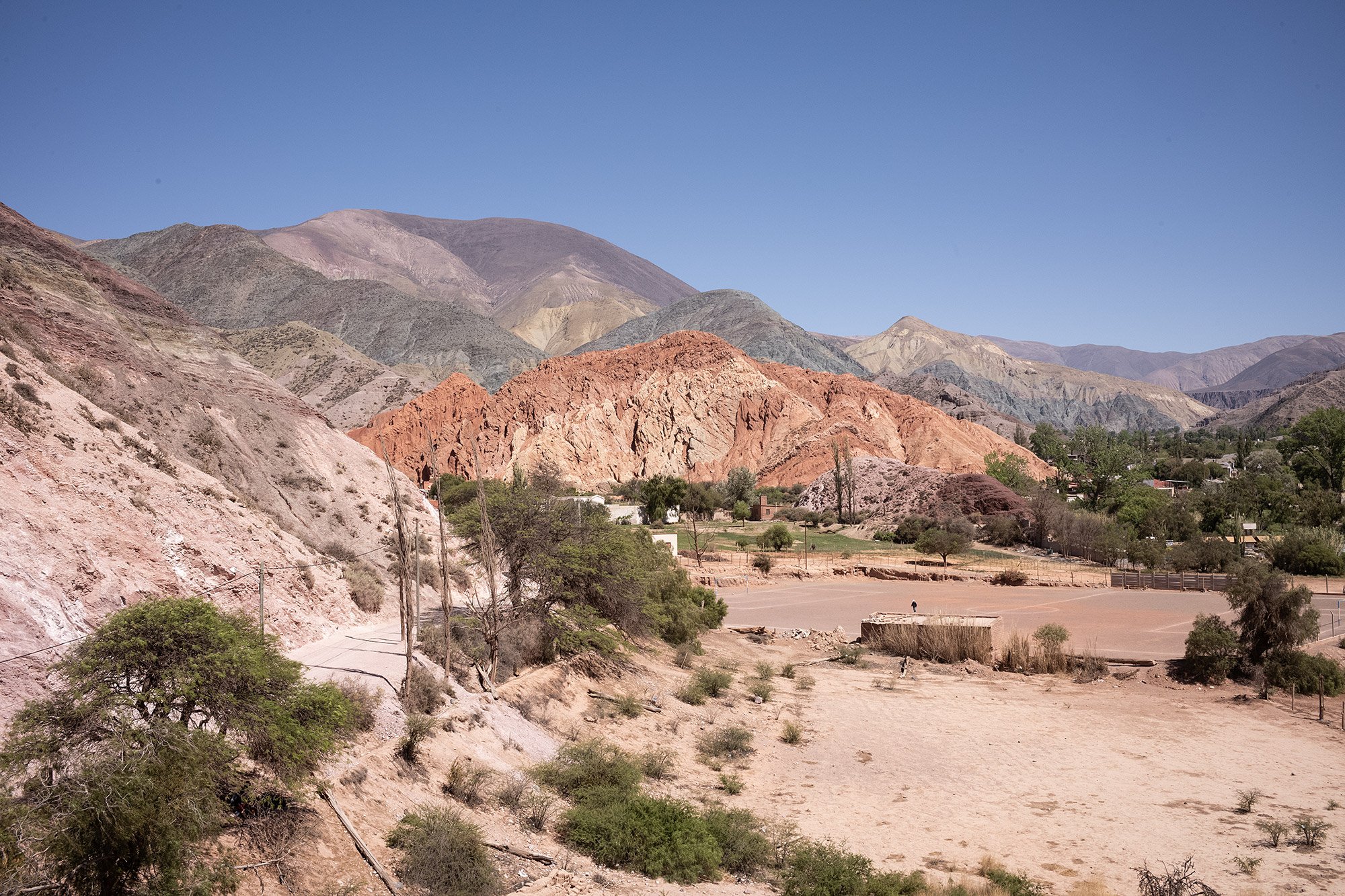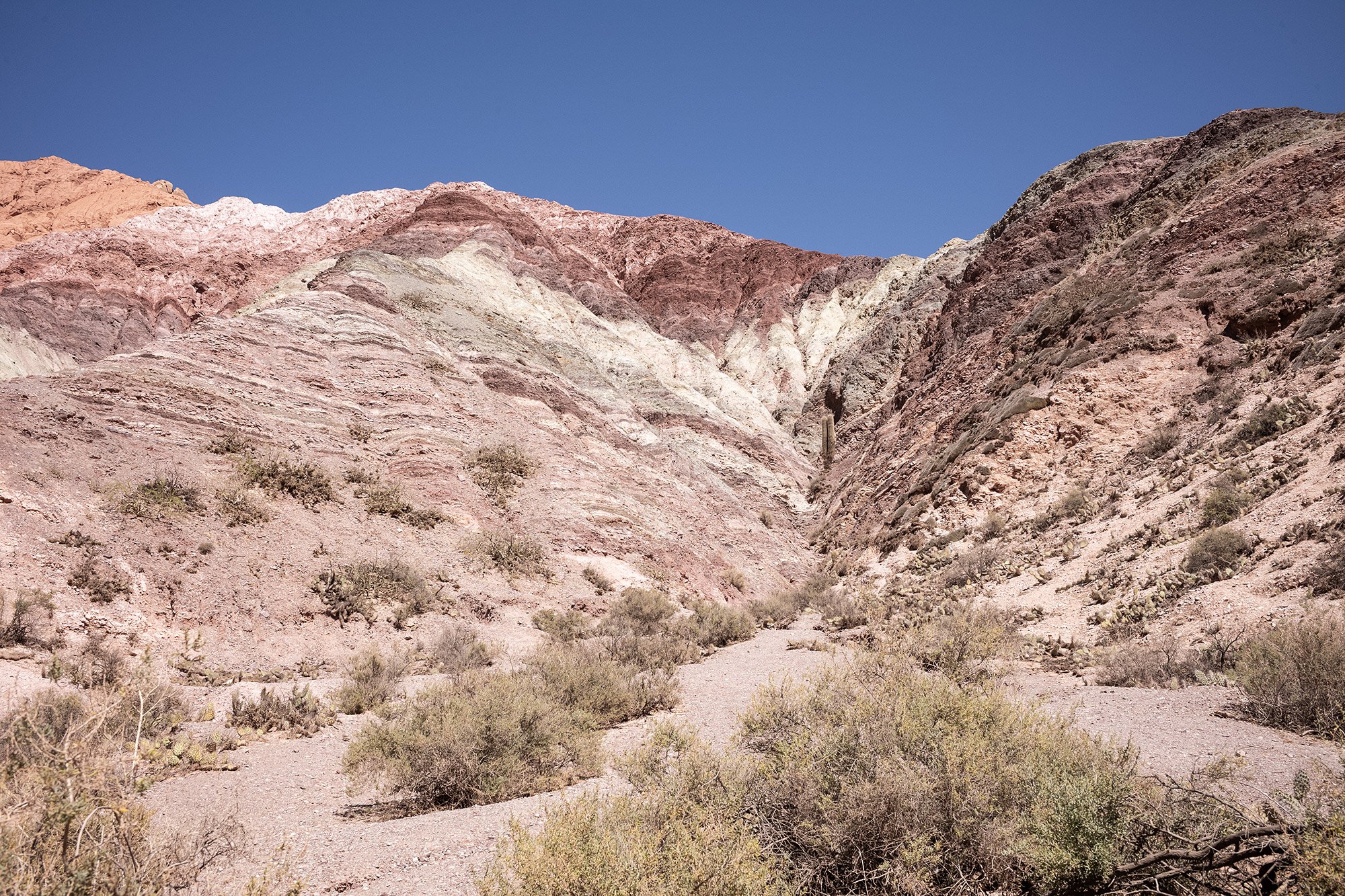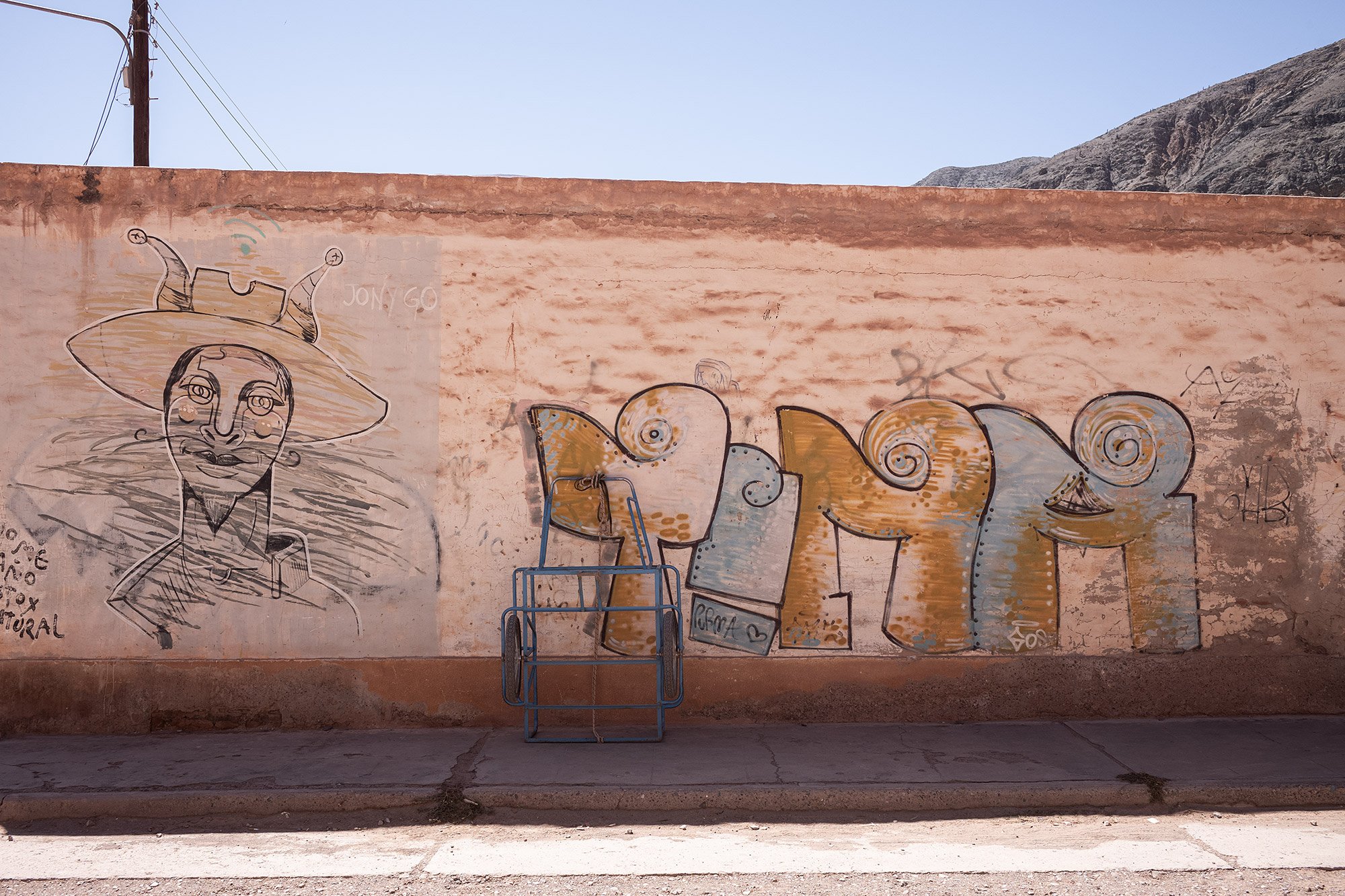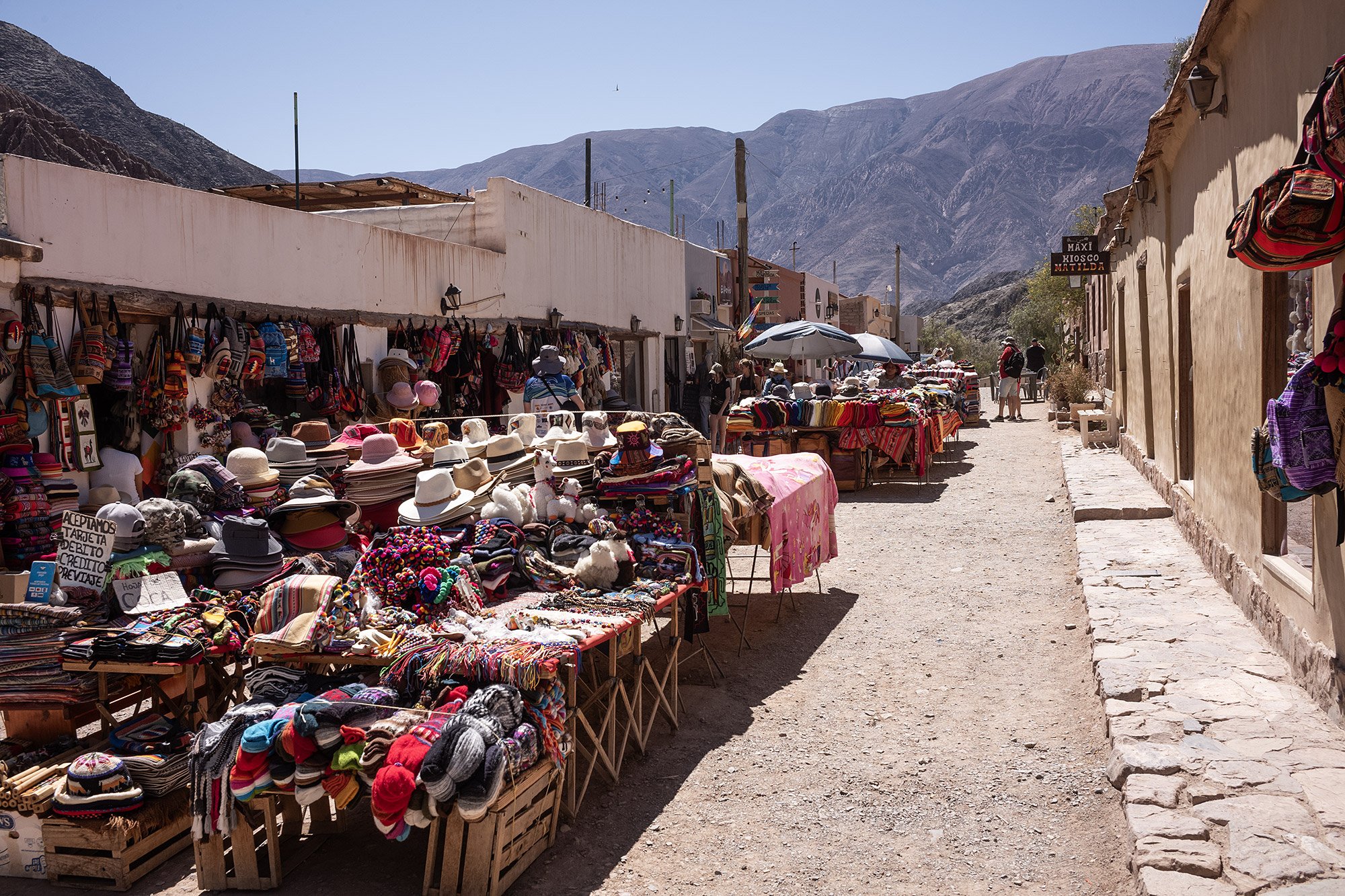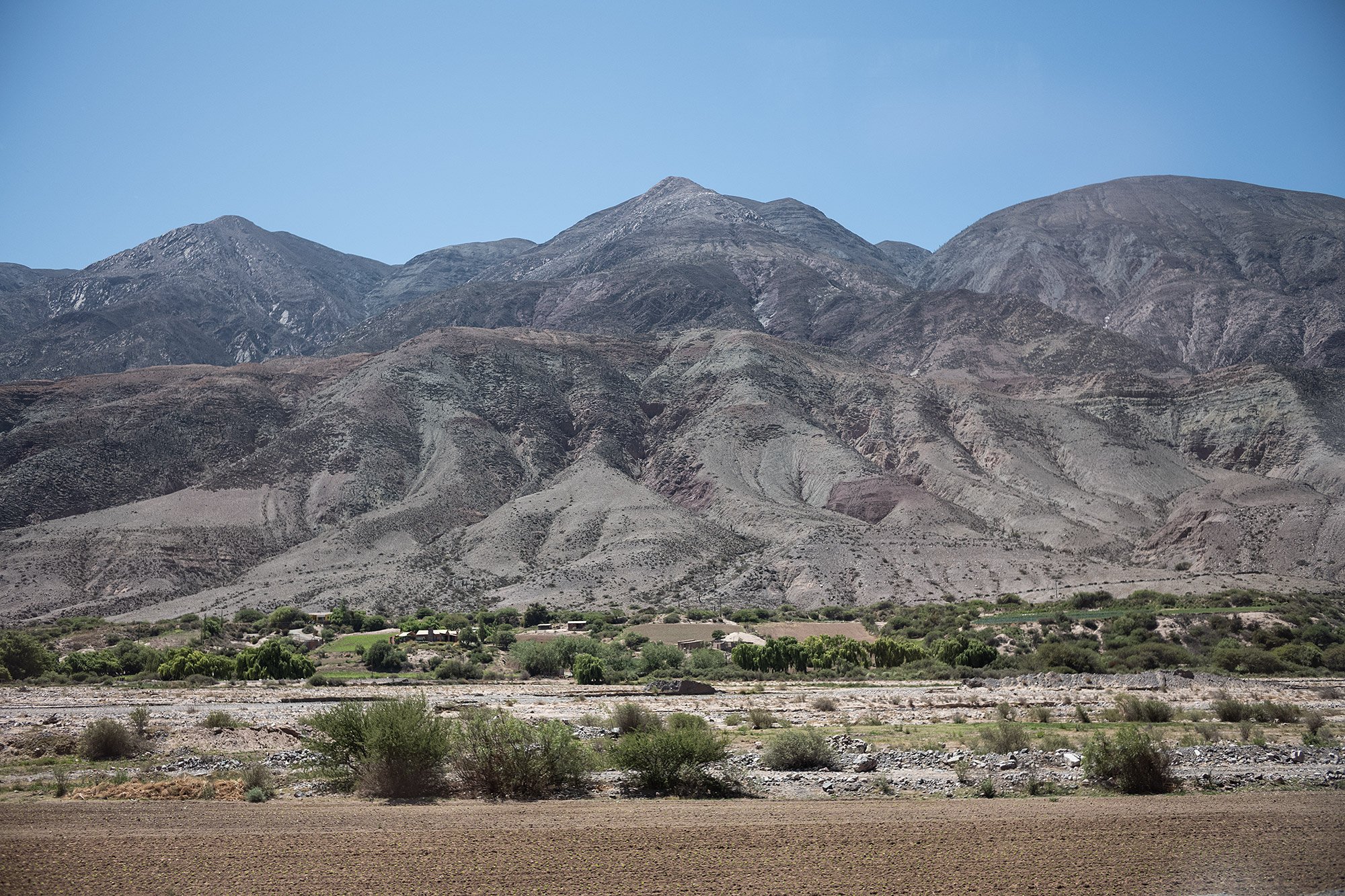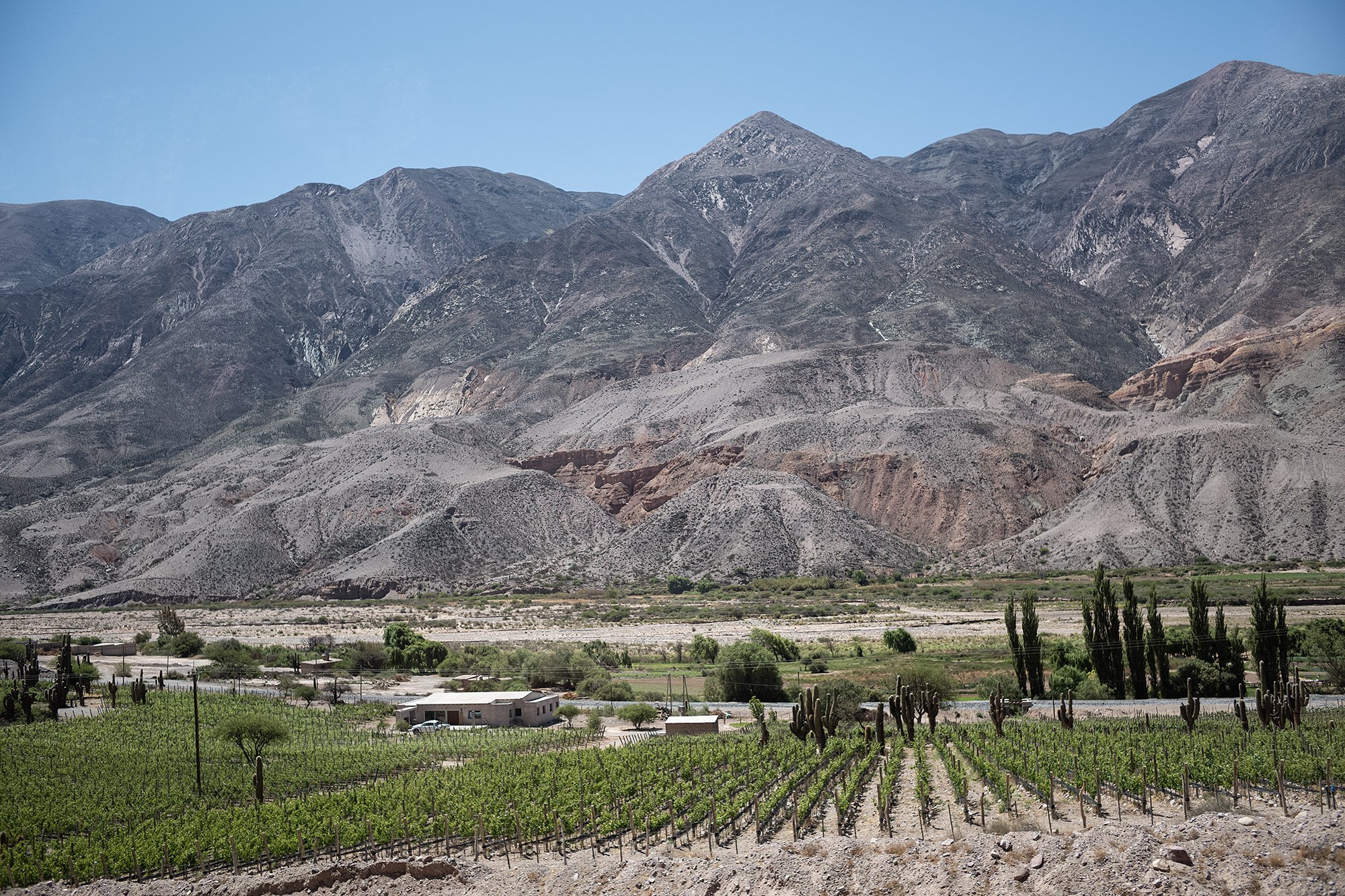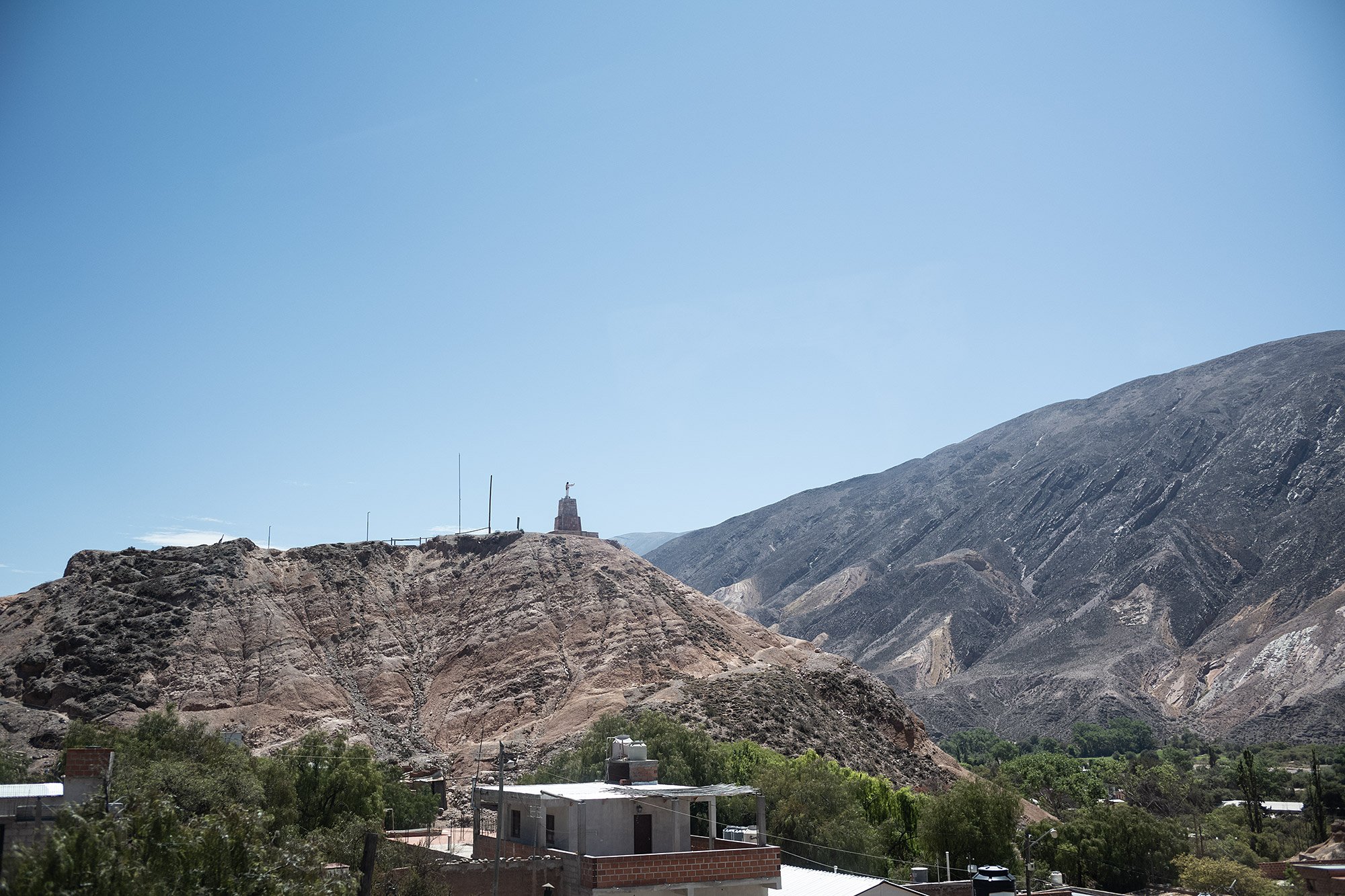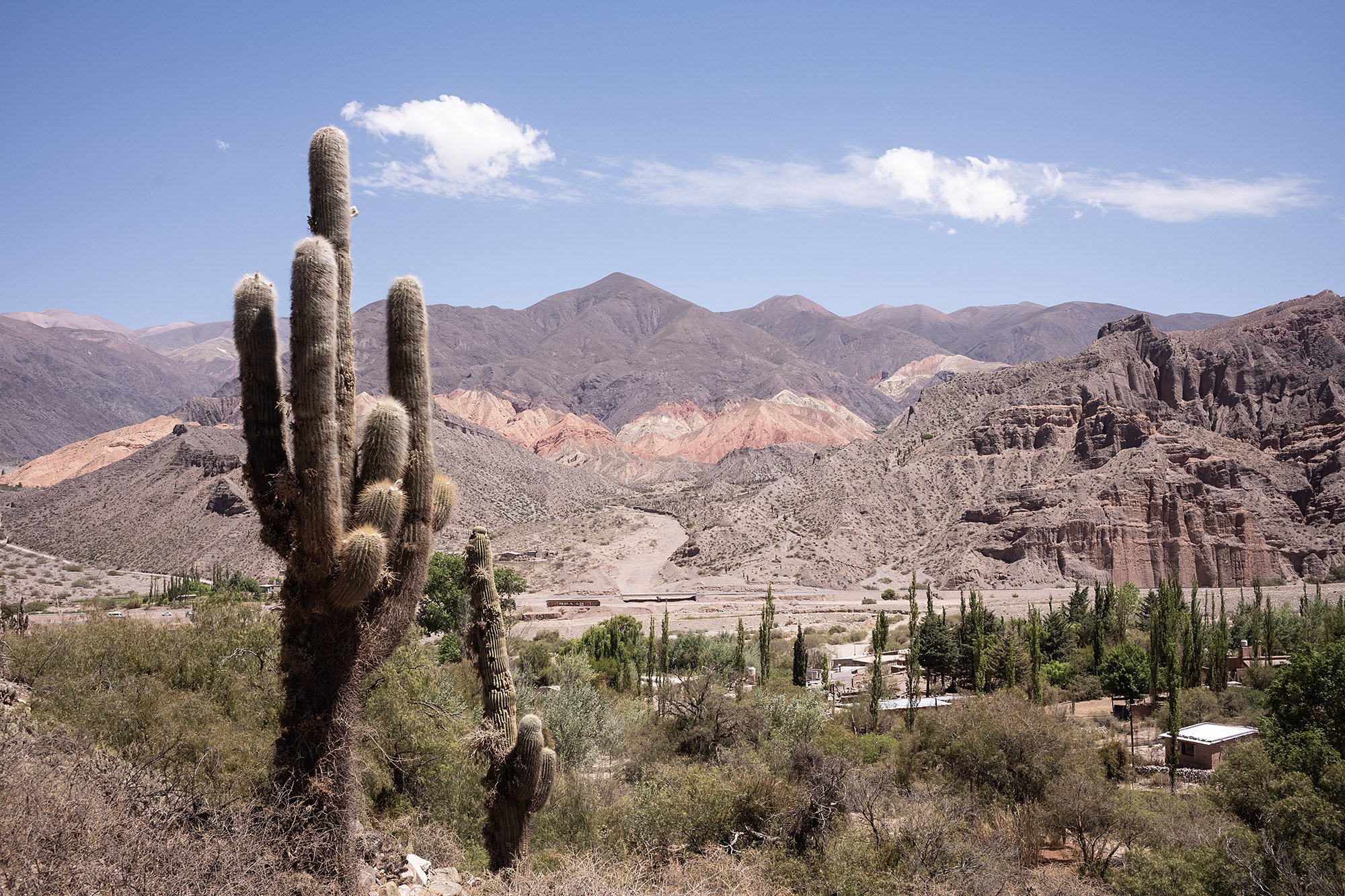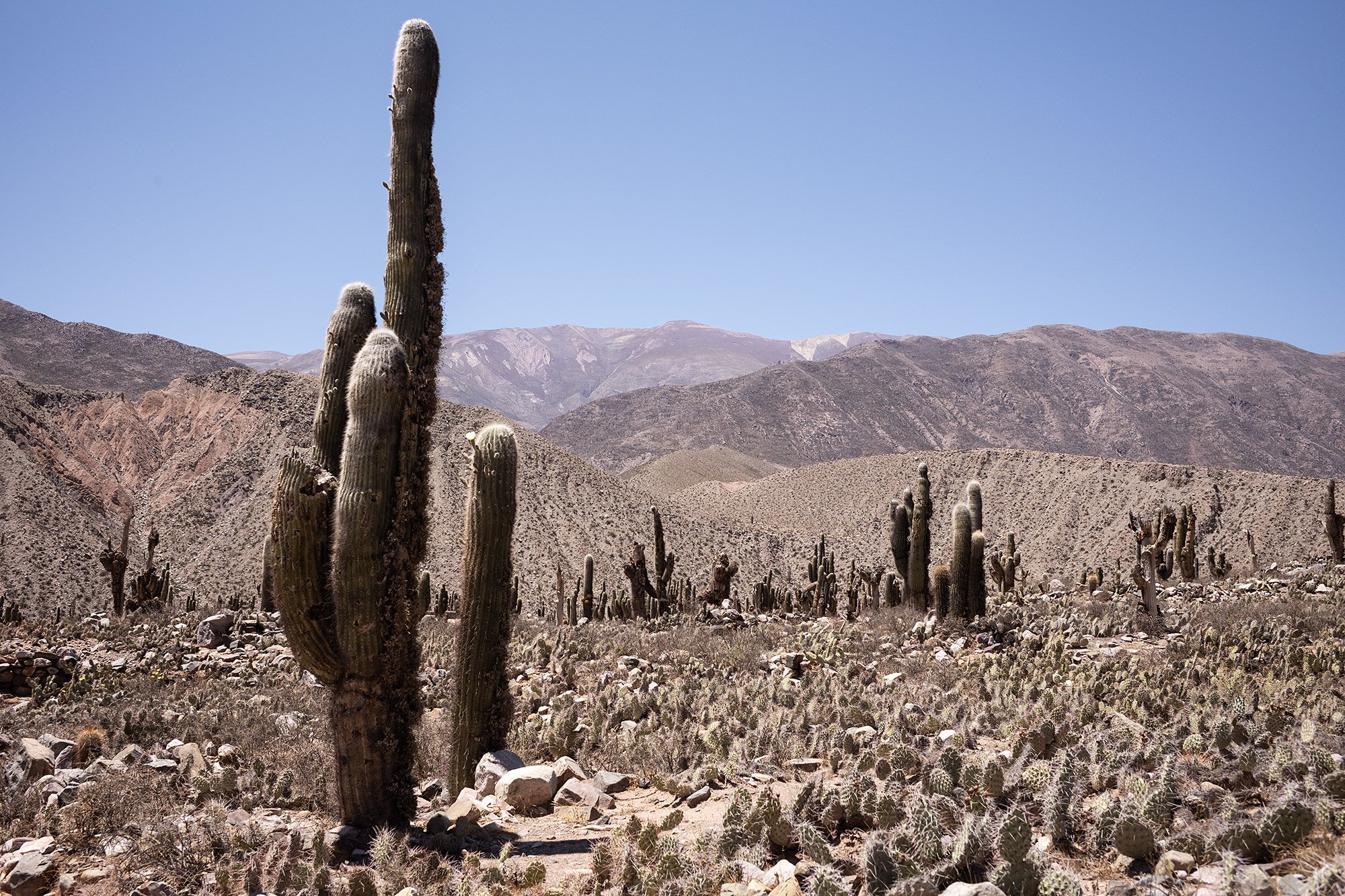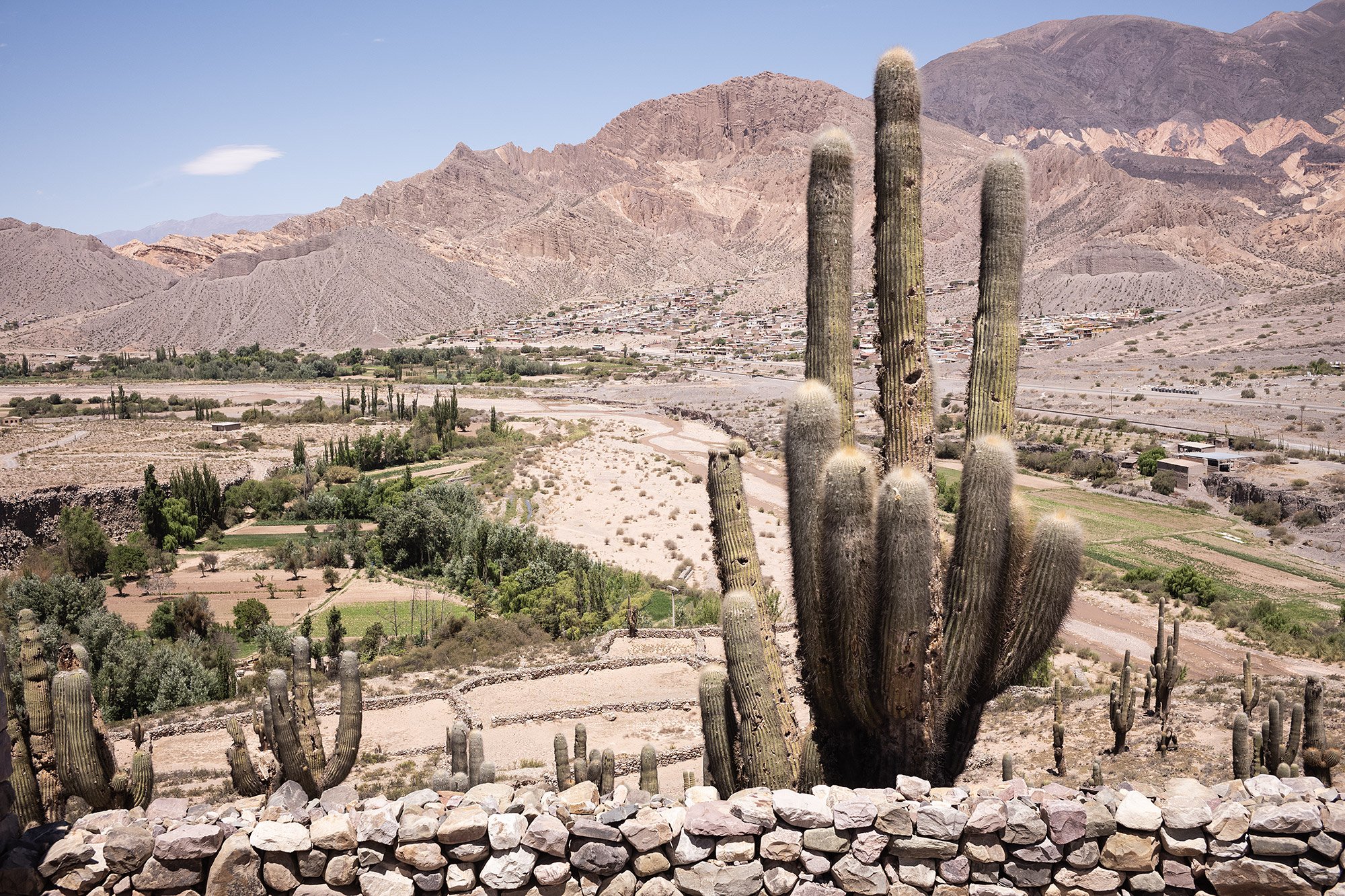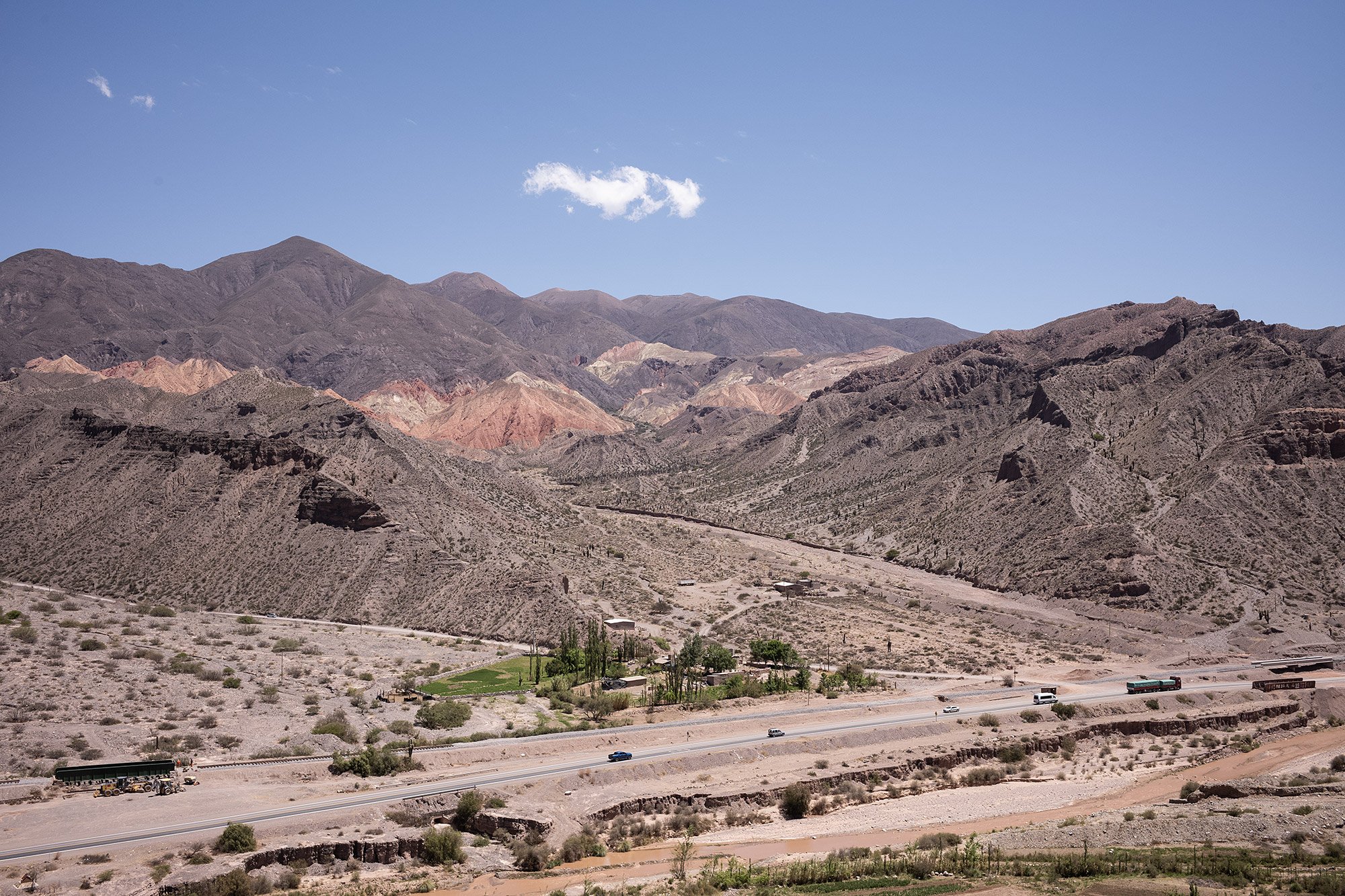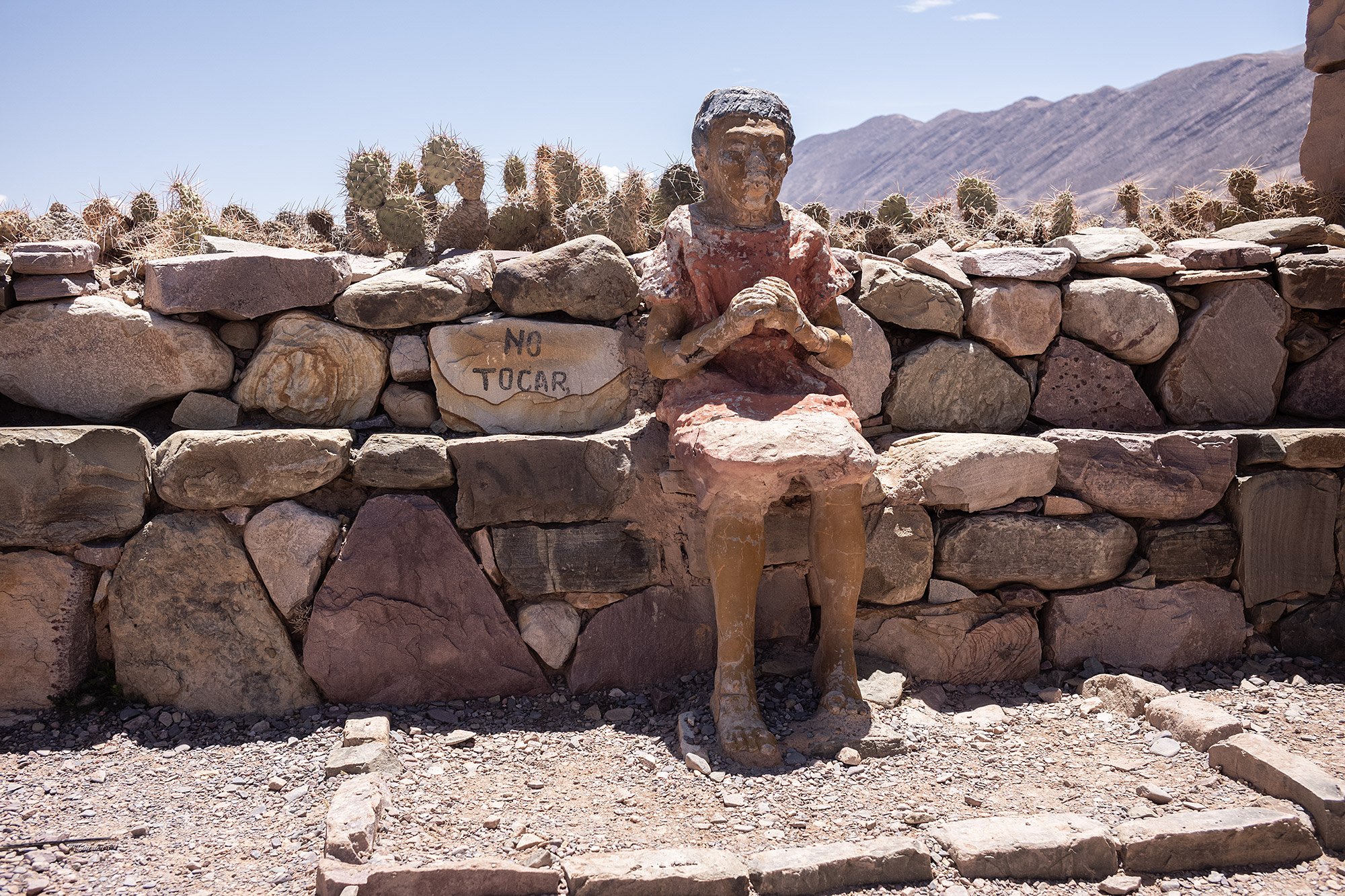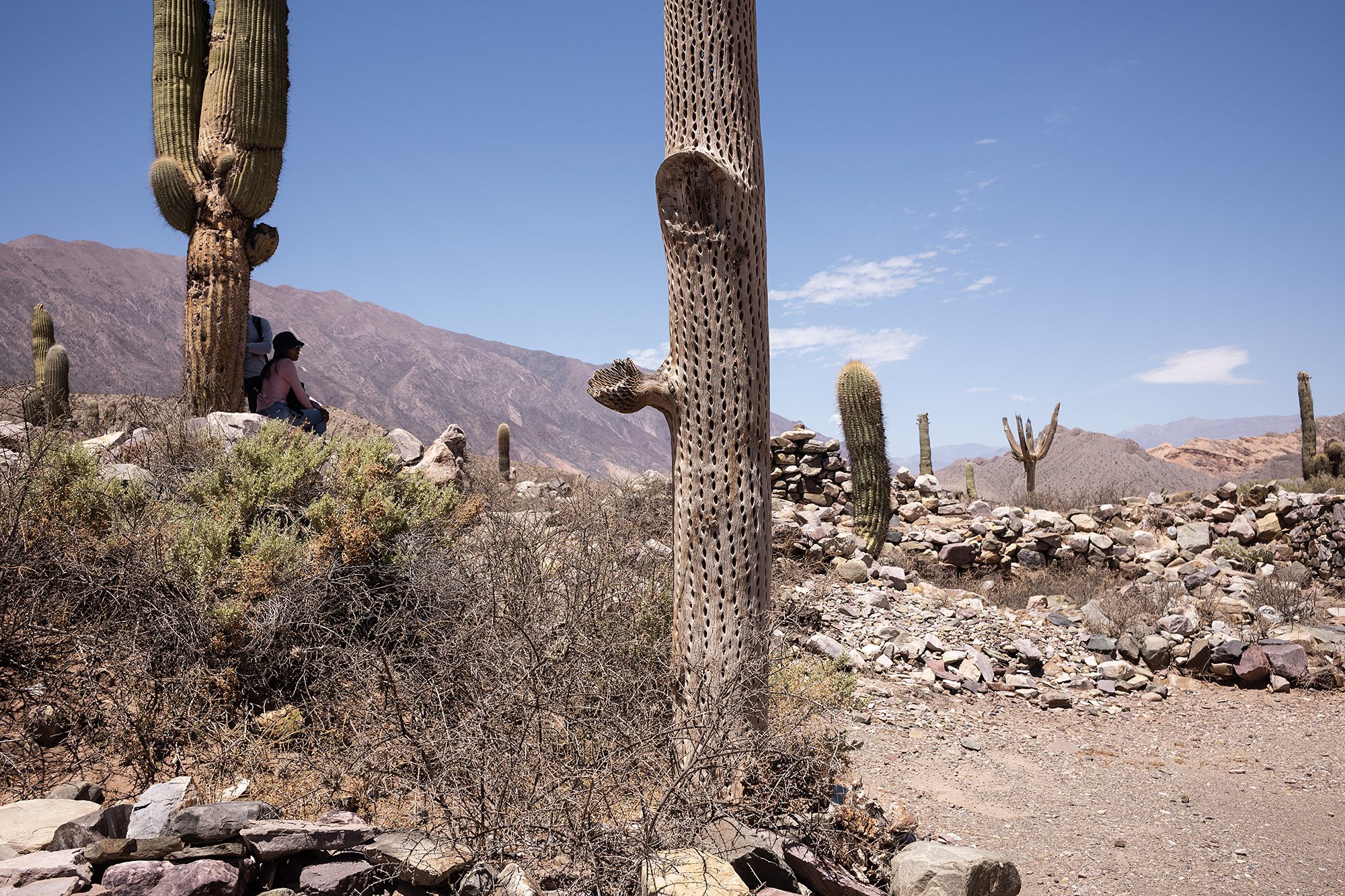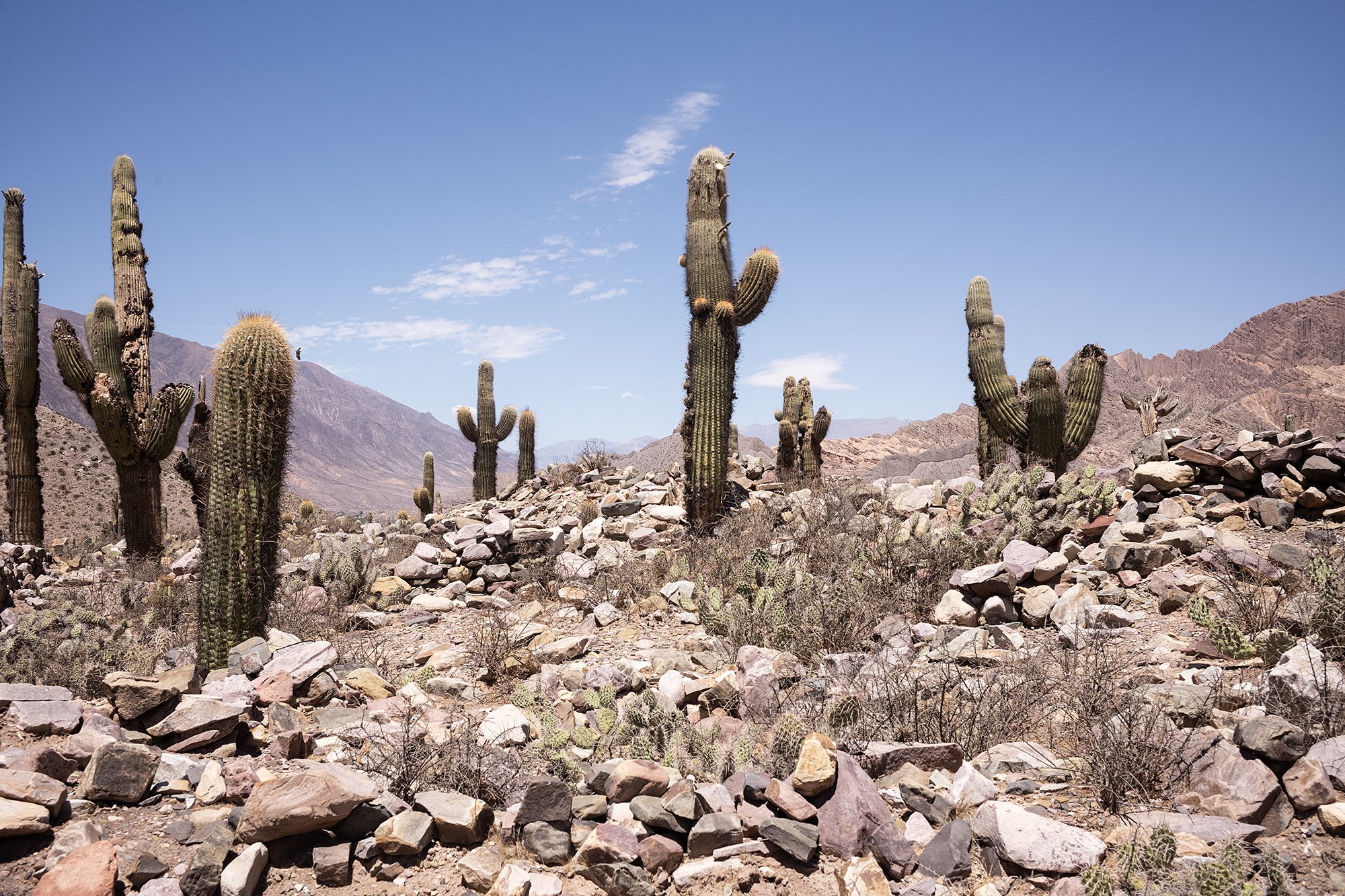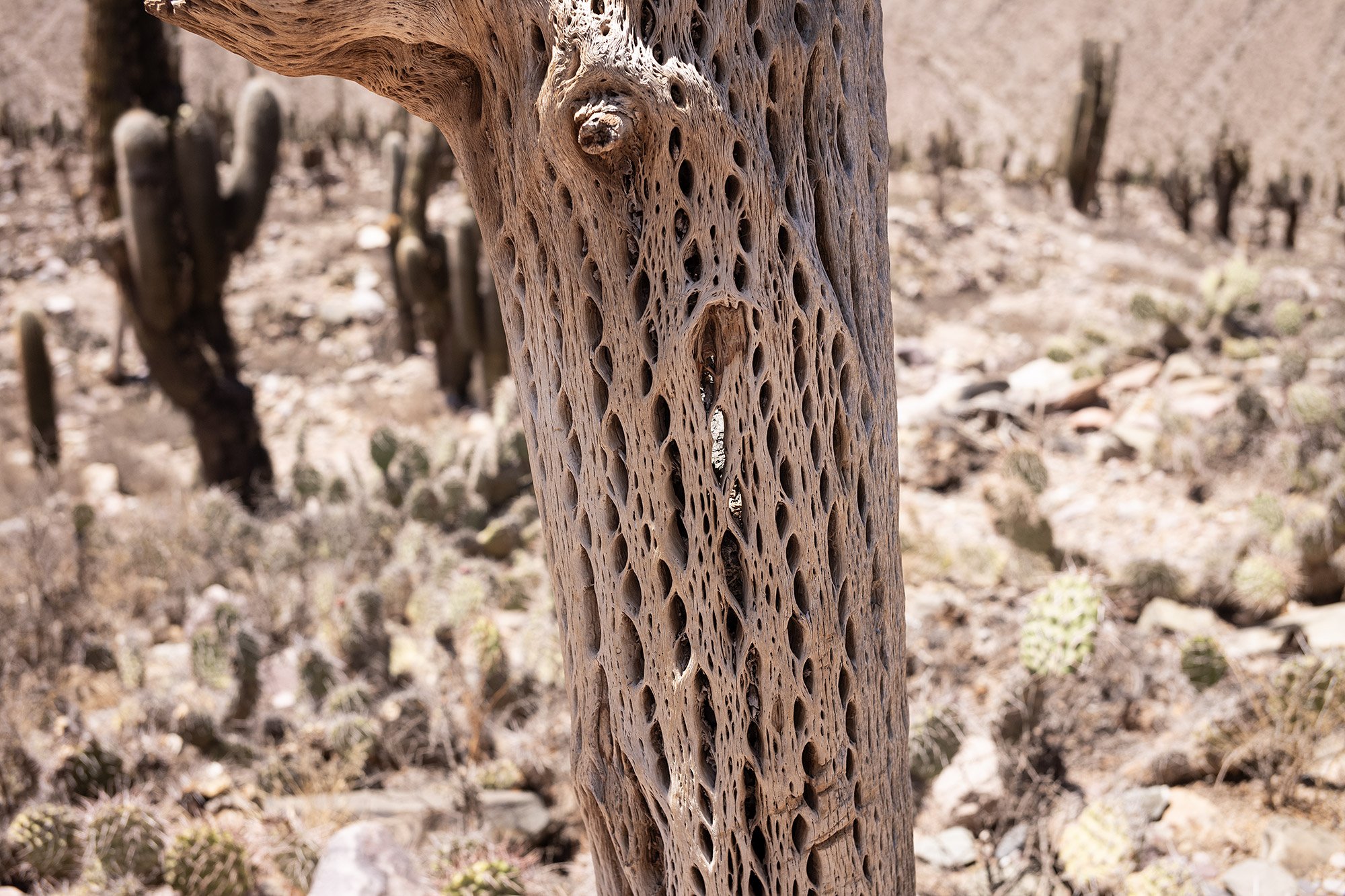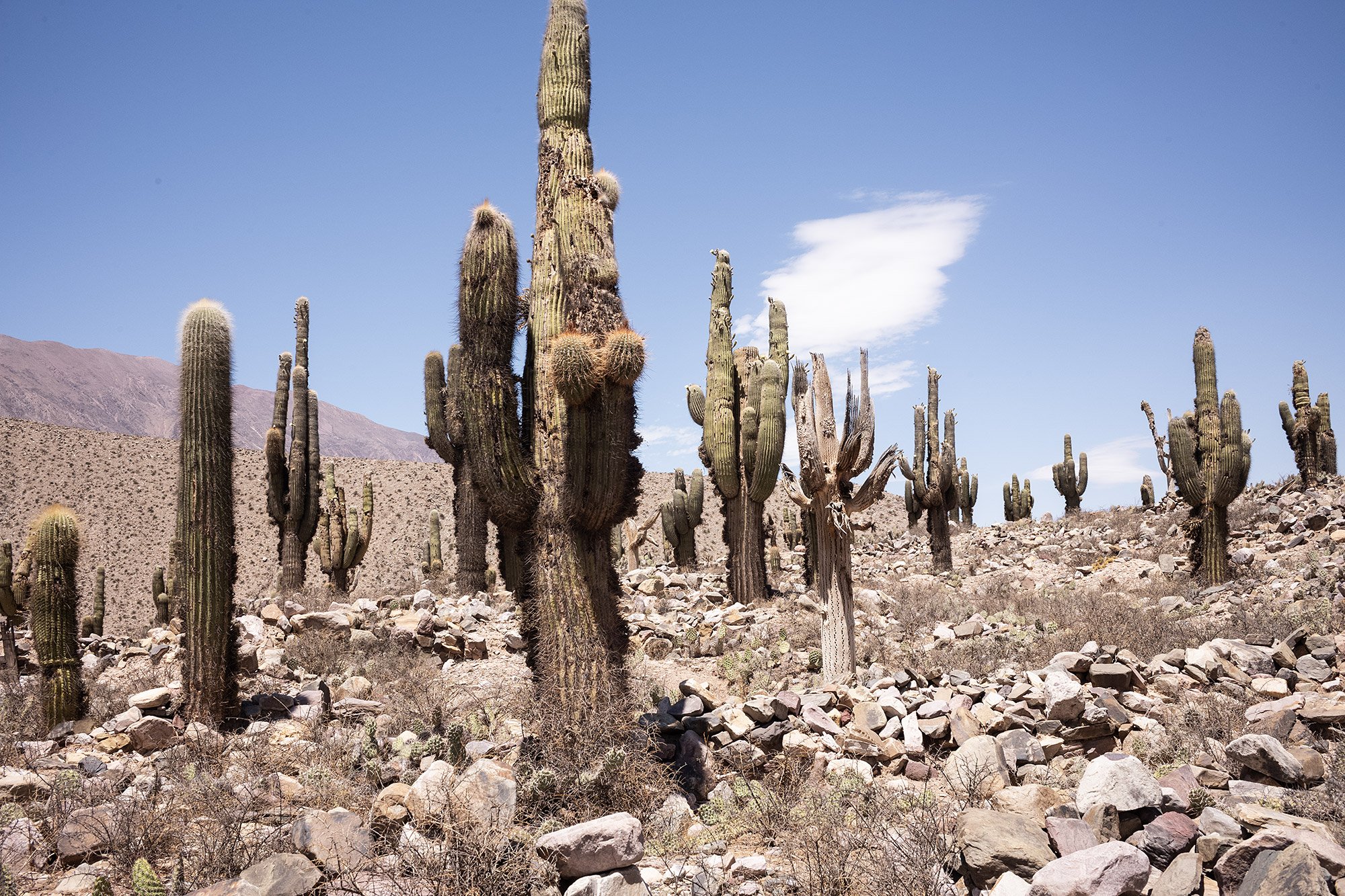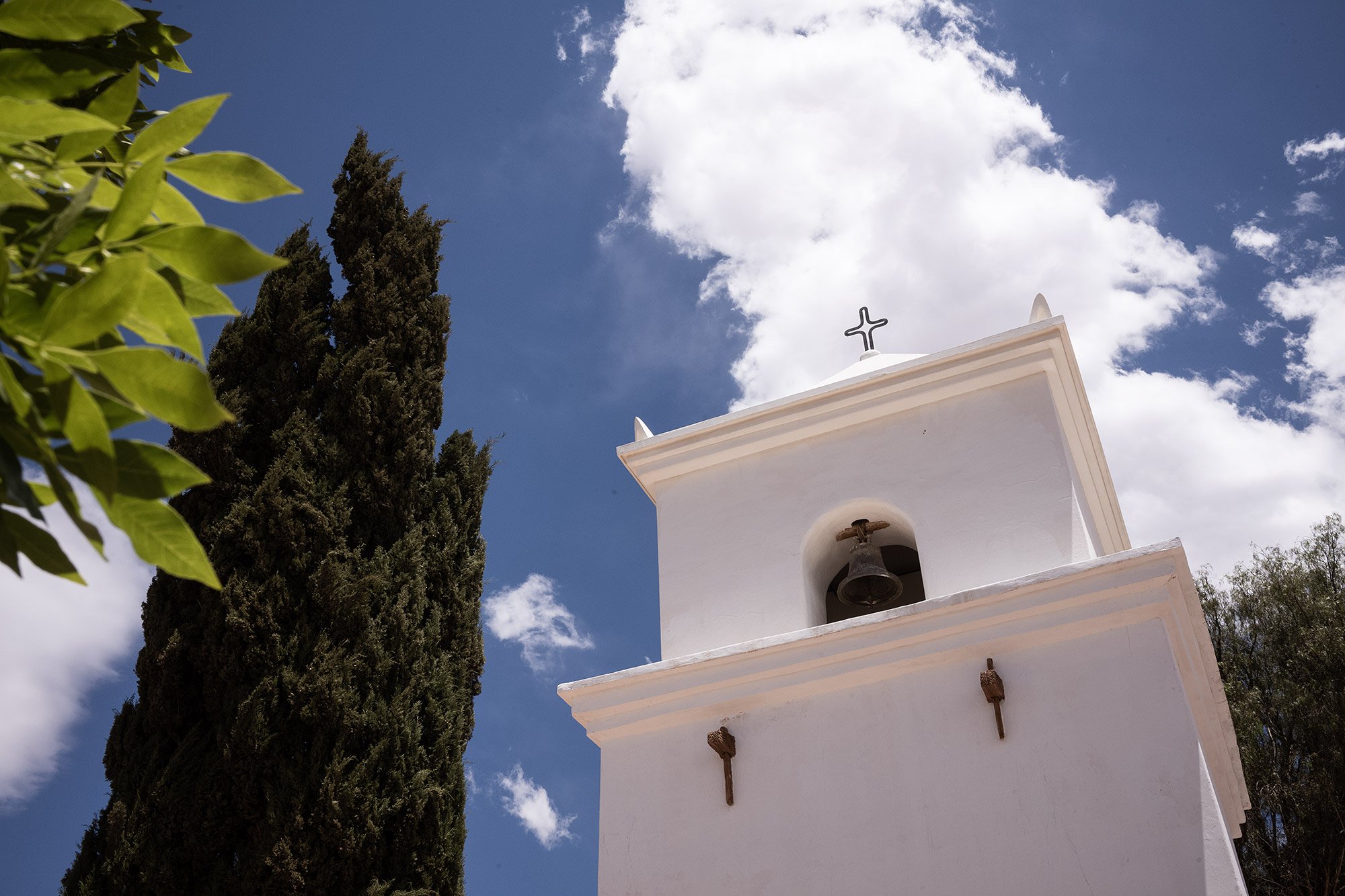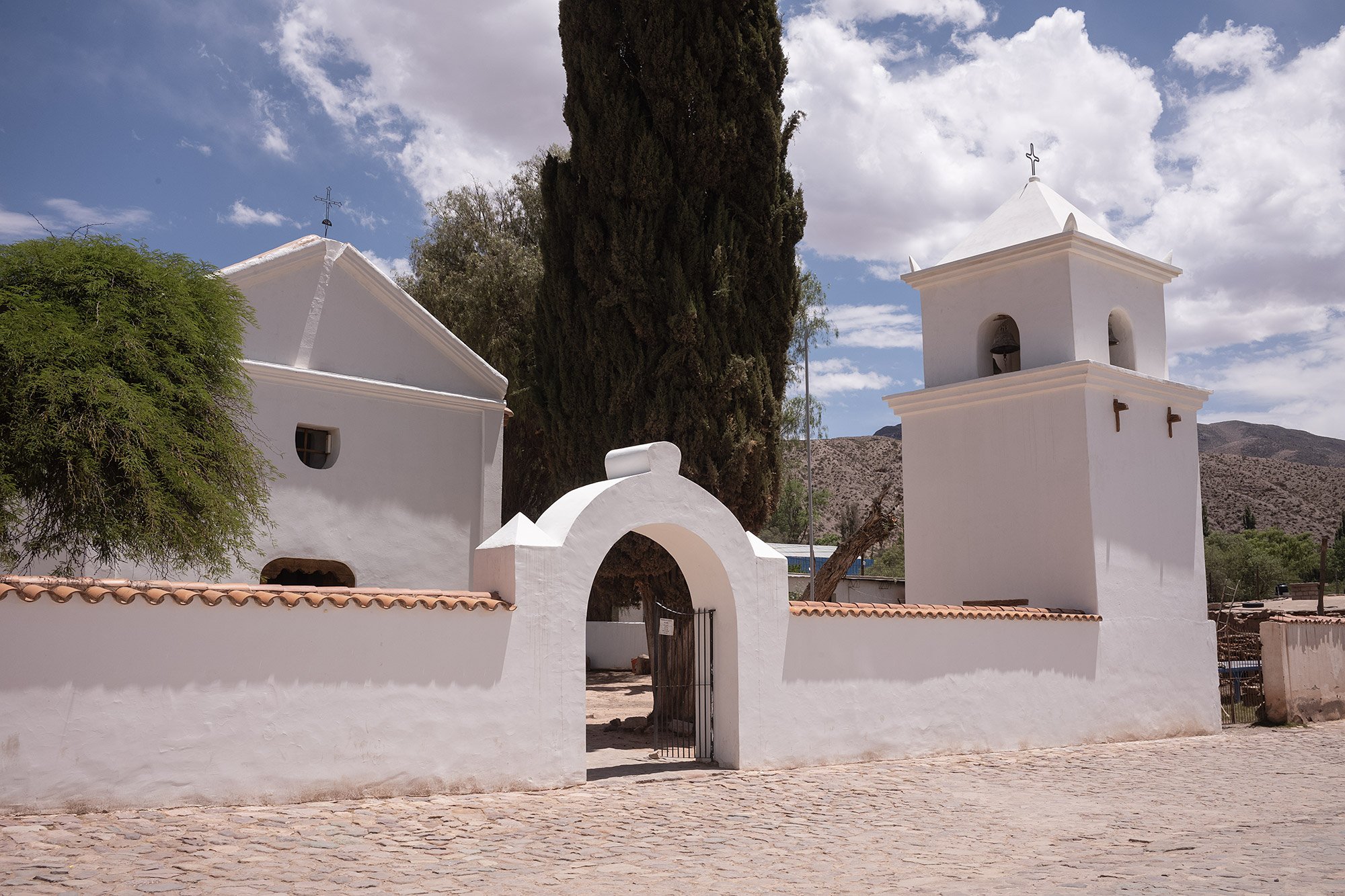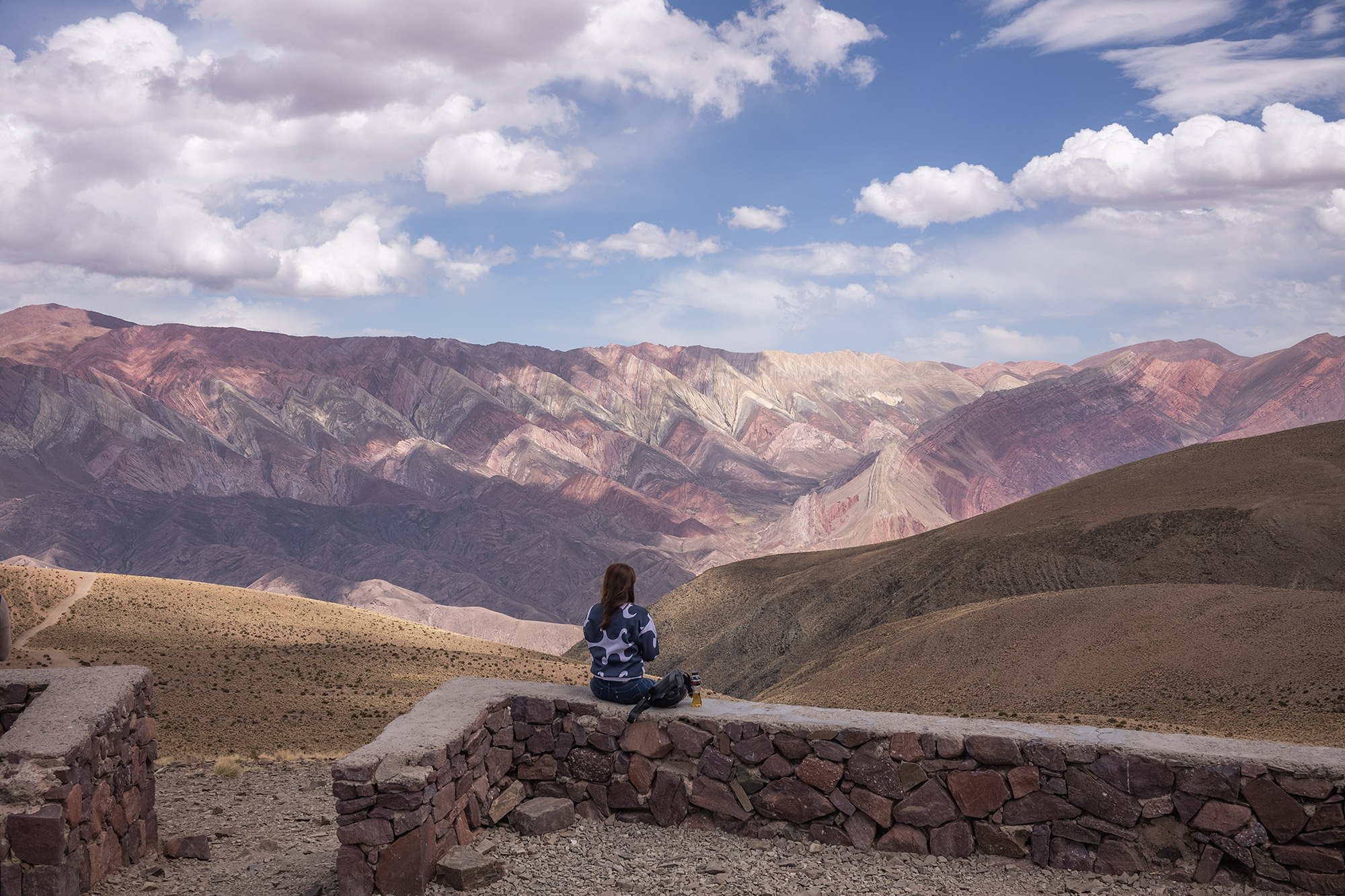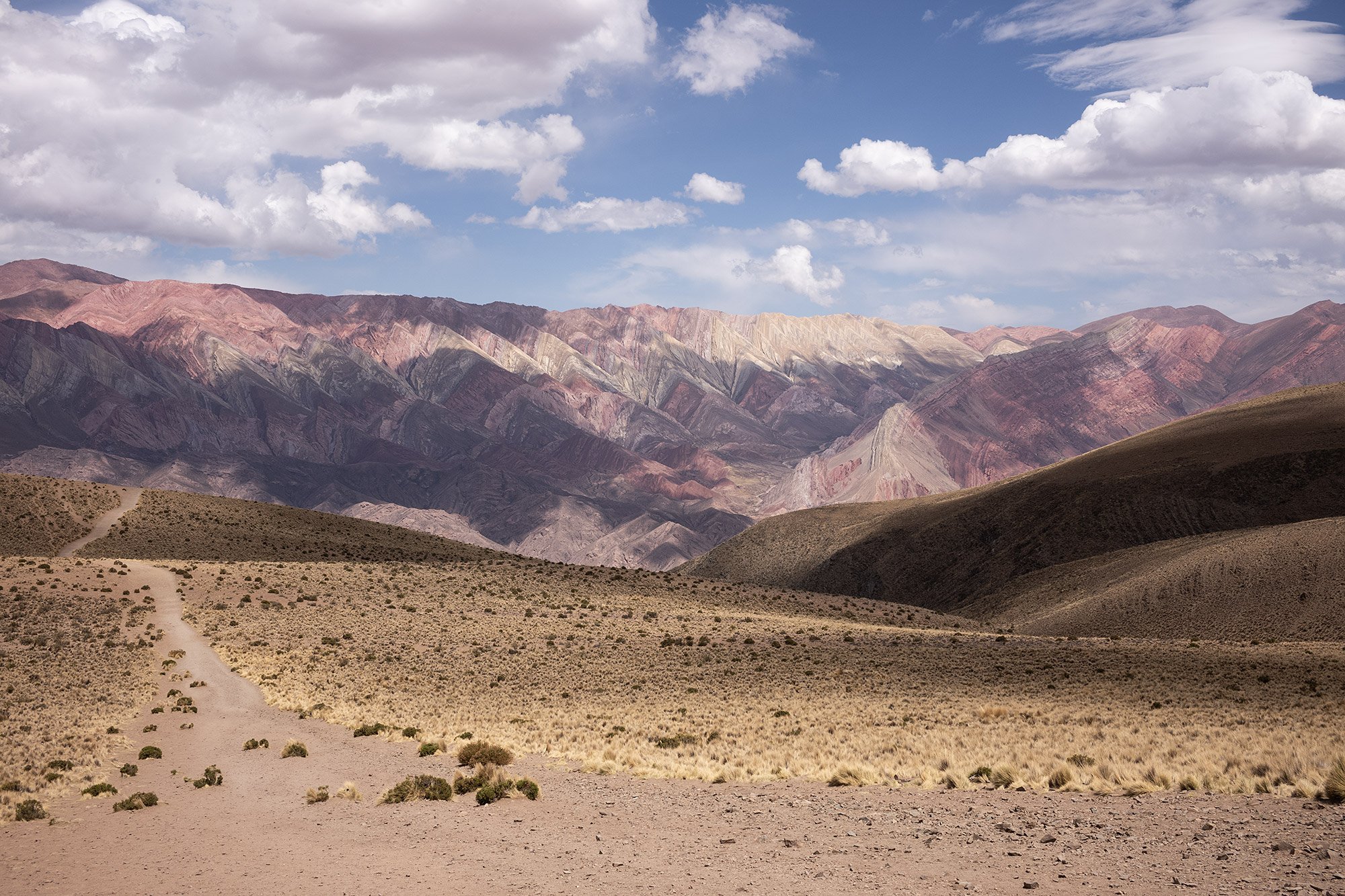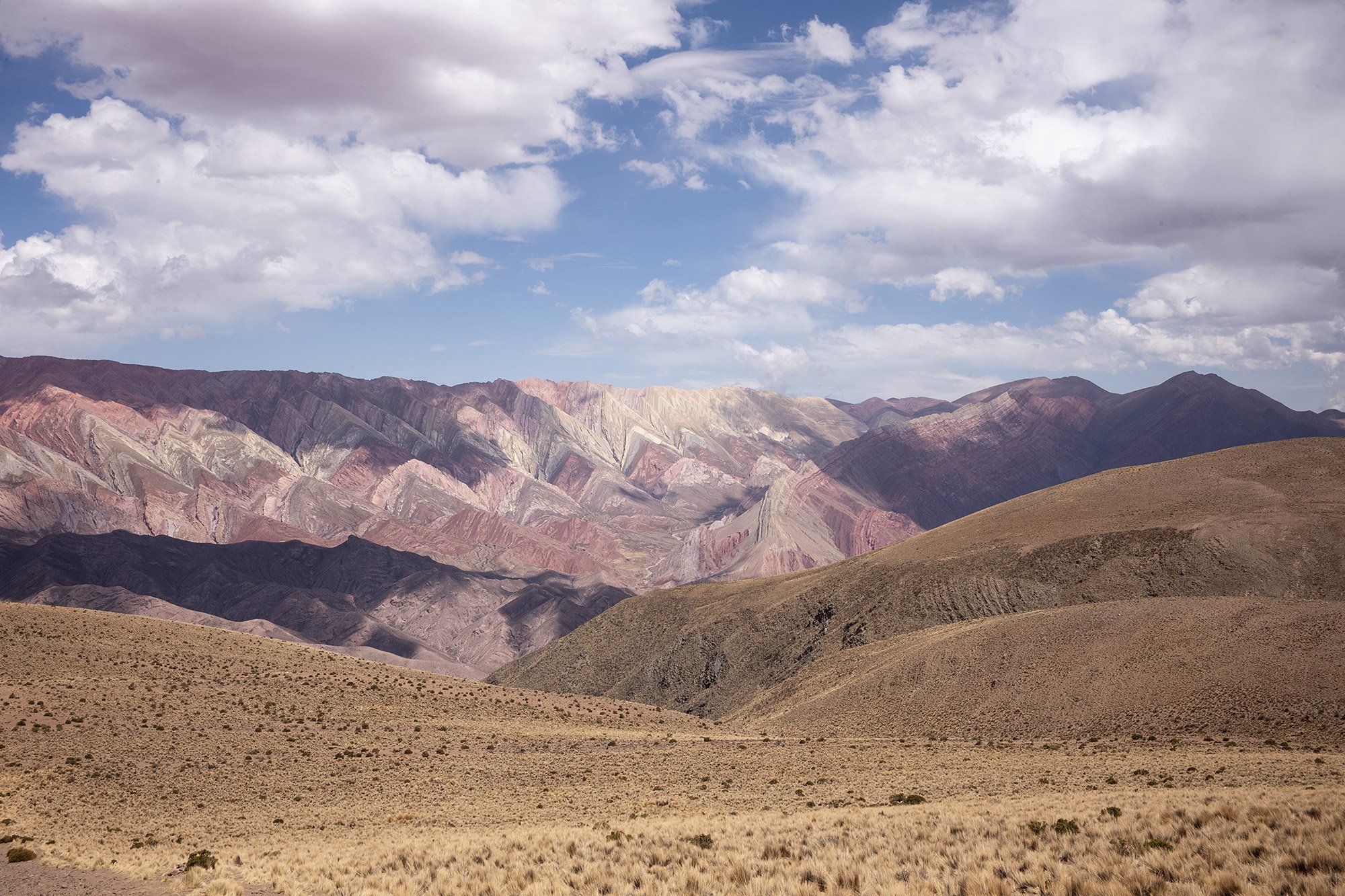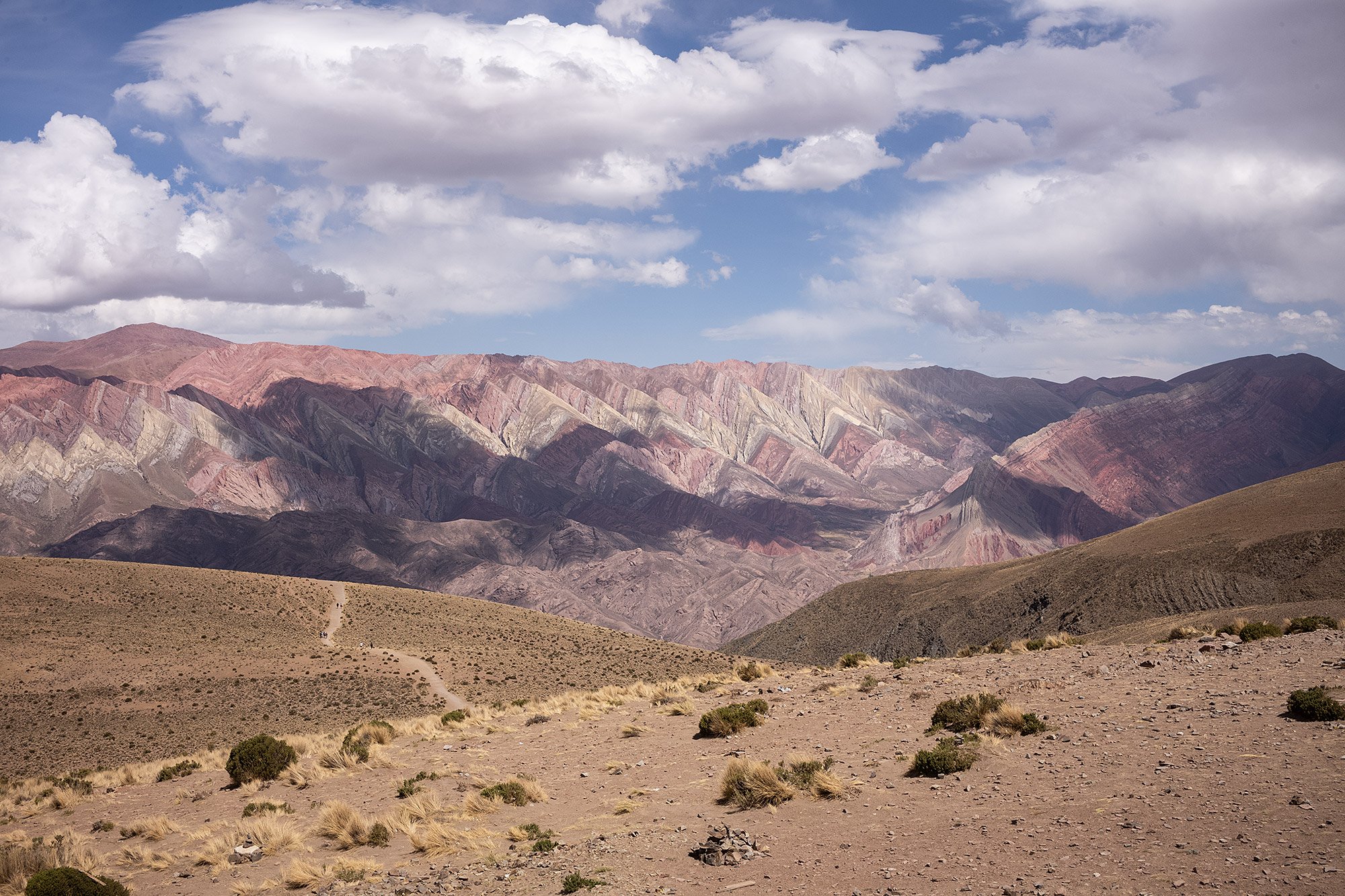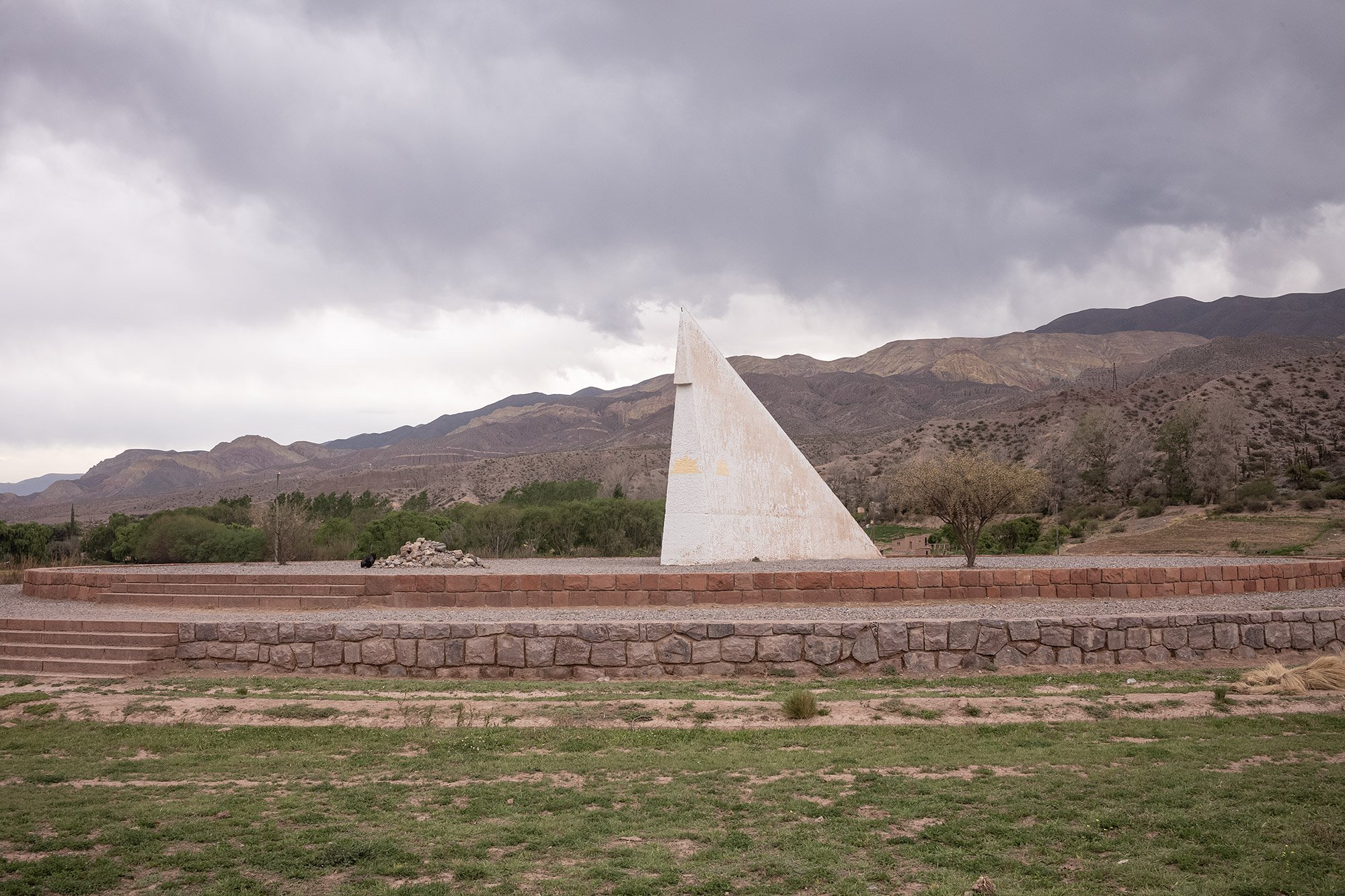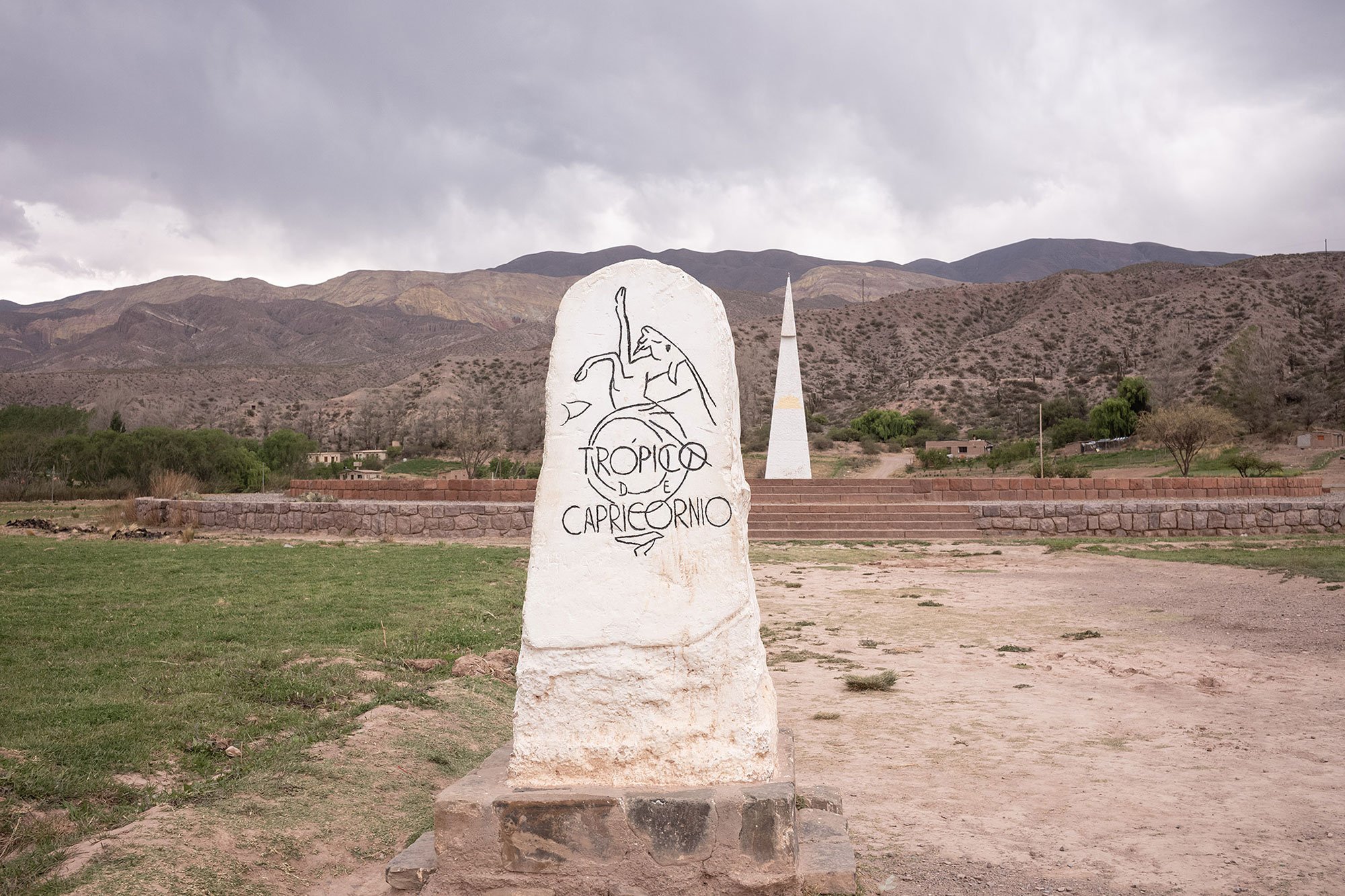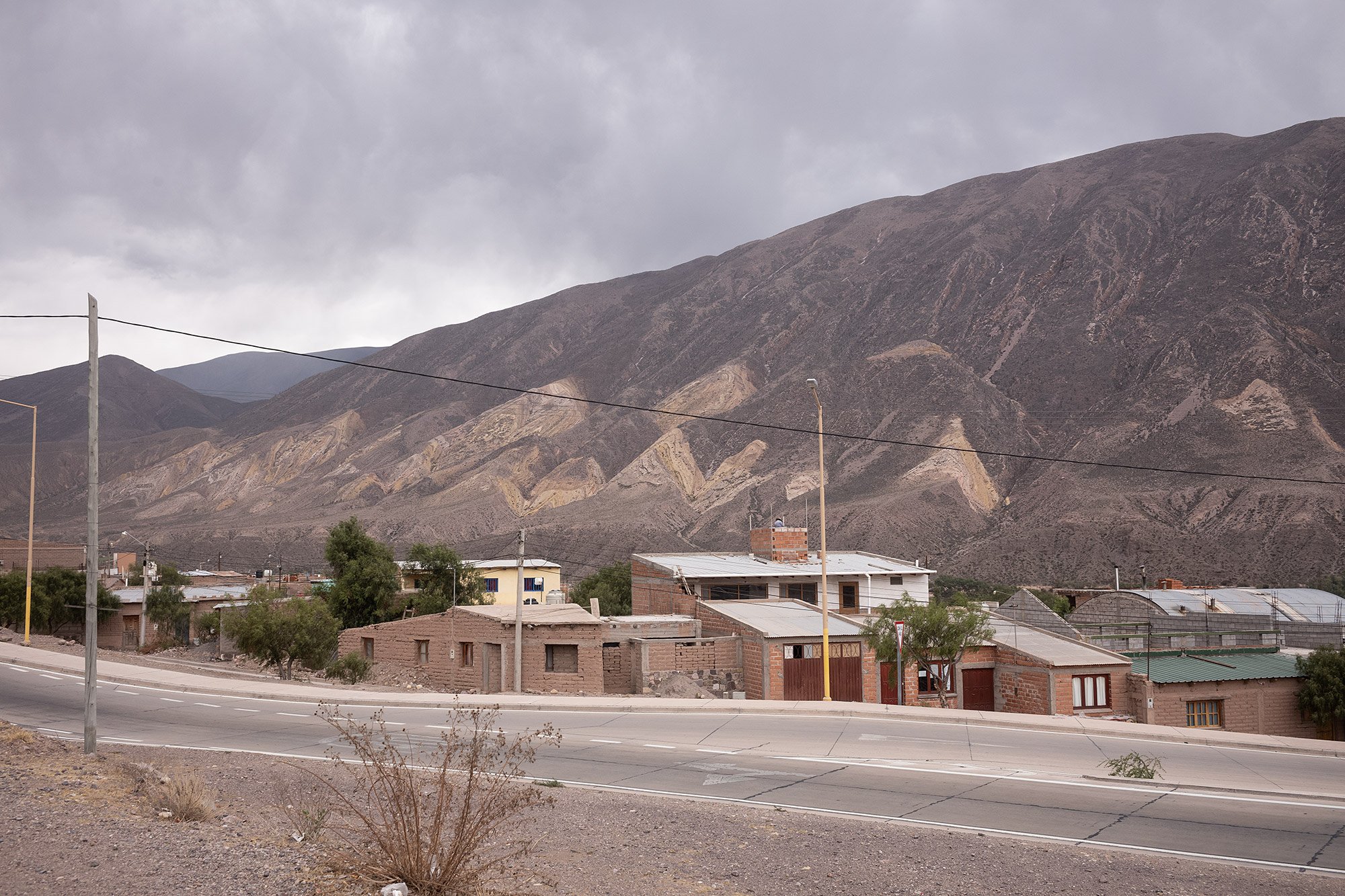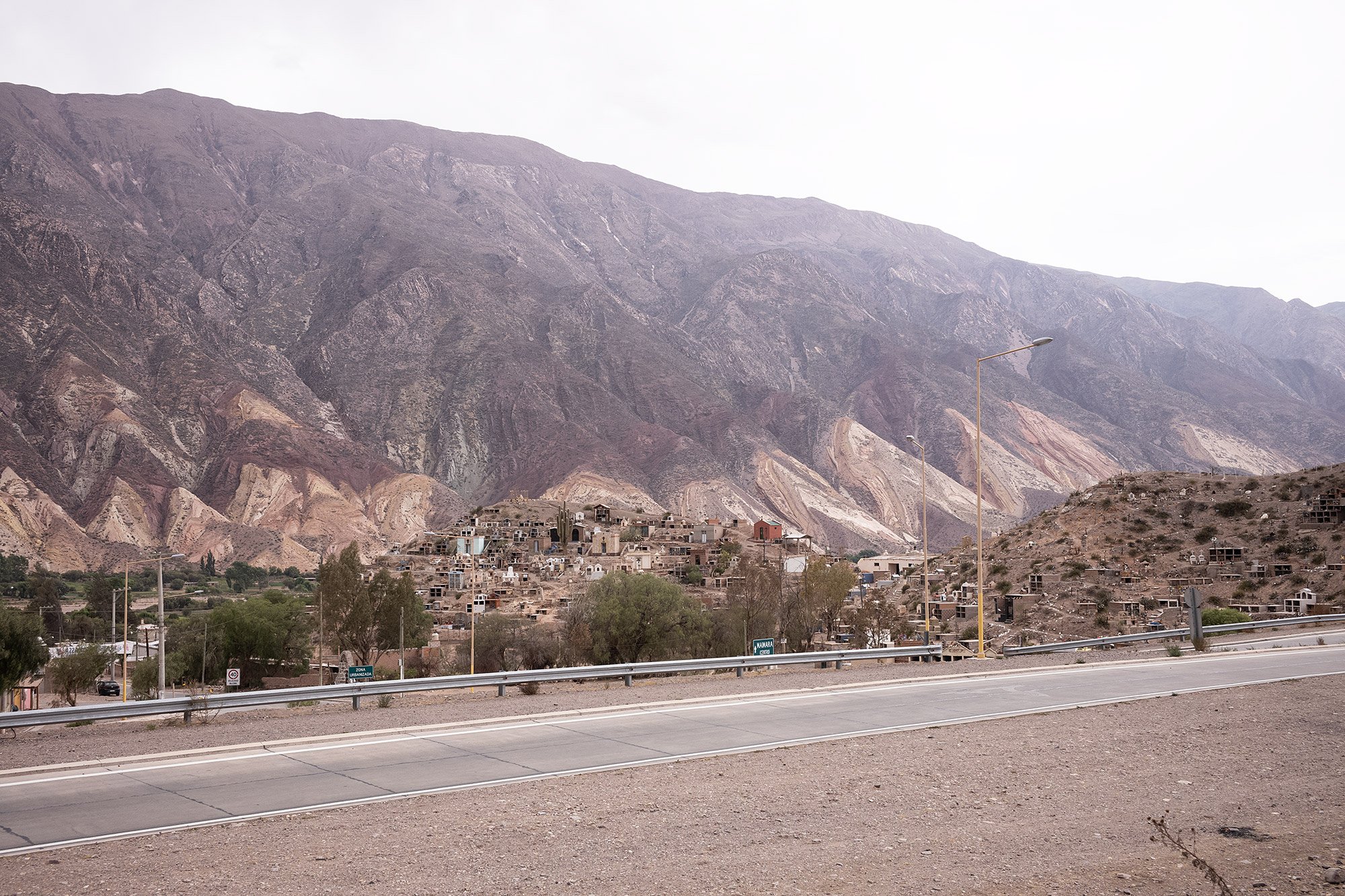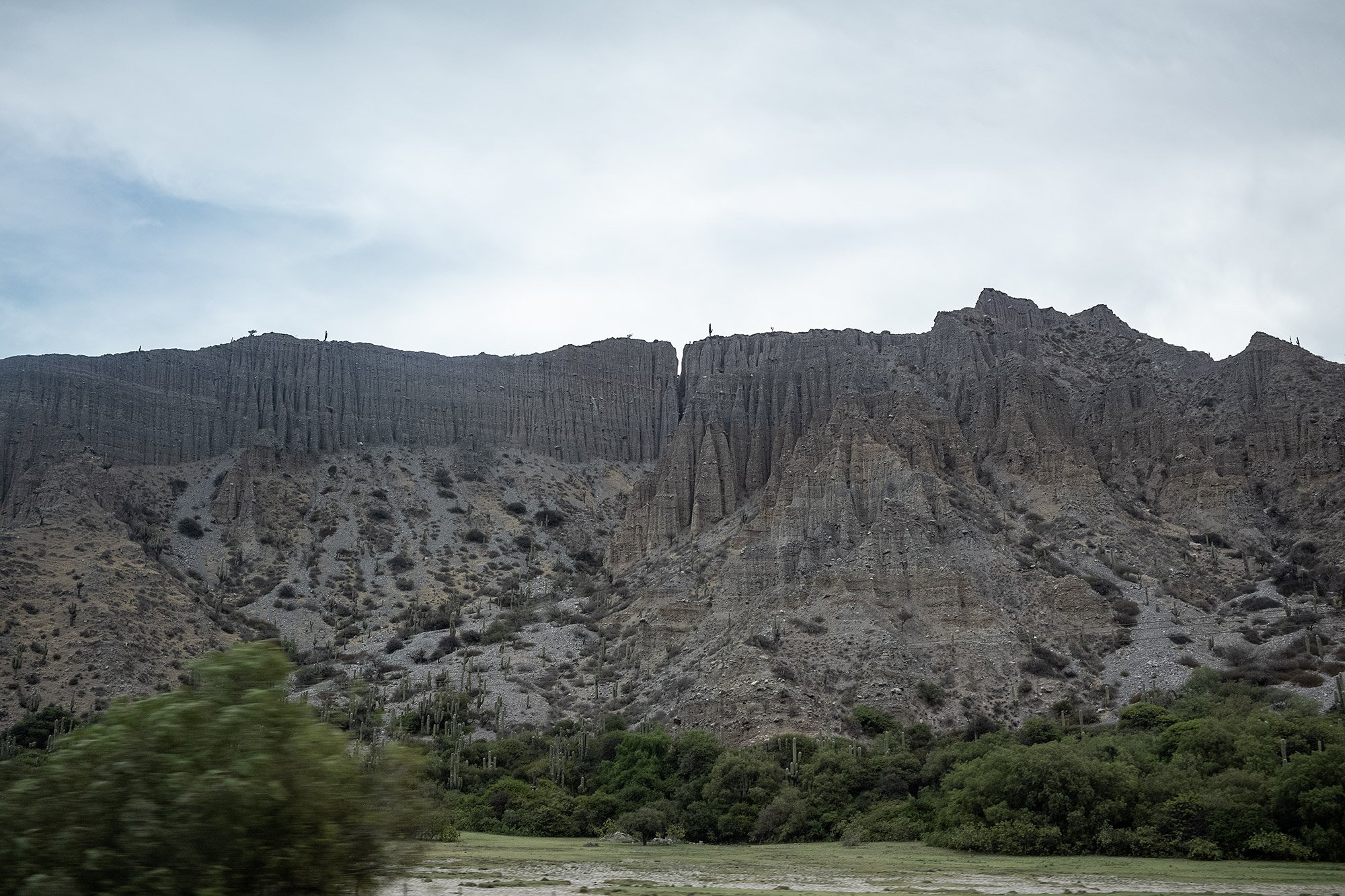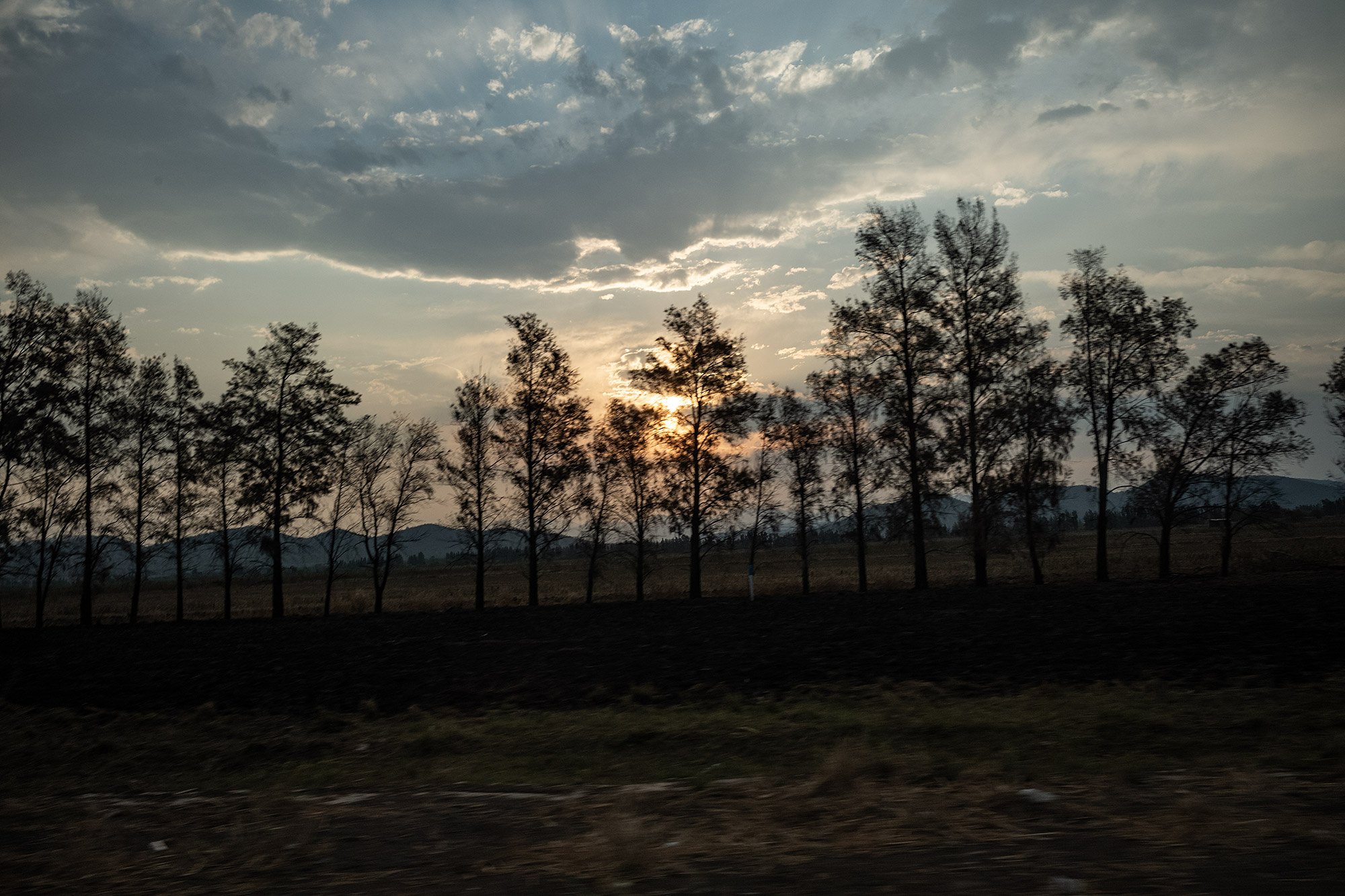A day trip from Salta to Humahuaca.
I am the first to be picked up. The van appears and the driver busies himself with last minute preparations. We’re waiting for the guide.
She soon comes walking down the street. She introduces herself and invites me to board. And then we start the process of driving around the city, picking up passengers. I shut my eyes and nap until I hear her testing the microphone. She introduces herself again and explains the itinerary as we leave Salta and being our journey north.
As we drove up route 9 into the province of Jujuy through valleys that gave way more and more to the red rocky mountains, our guide pointed out old railroad stations. She said that new stations were being built and the tracks were being upgraded with the intent of introducing a tourist train that would shuttle people between the towns and villages we were visiting, offering another way to view the landscape around us.
Nearing Pumamarca the van pulls off to the side of the road so we can take a photo of the 7-color hill from afar. Entrepreneurial villagers have set up shop and sell various tchotchkes as tourists pose and take photos of the hills beyond the city sign.
The van drops us off just inside the village. Our guide tells us that to our right up the road is a viewpoint. The church and main square are just ahead. She looks at her watch and tells us we have 40 minutes and to meet back at the same spot. I take a right and high-tail it to the viewpoint. I pay 200 pesos to climb a set of metal stairs for the view before climbing back down and walking along the edge of the hills to admire the striations in the rock.
I walked to the main square and to the Santa Rosa de Lima Church, anchoring the southern edge. The square was lined with tables piled high with blankets and trinkets and hats. I welcomed the cool shade of the church. Carmen had warned me of the sun in Salta, and it was intense. The temperature was climbing and the sun was relentless.
The church itself dates to the 17th century. Adobe walls support a ceiling of giant cactus wood and mud cake. I lingered to admire the altar and paintings before venturing outside to look for the van.
In the square I saw people holding tortillas in paper napkins, the surface blistered with charcoal. I hadn’t had breakfast and happily stumbled upon a man grilling them on a corner. I asked for one with mushroom and cheese and handed him 1,000 pesos. He gave me 200 back in return. I bit into the warm bread and was in heaven.
In the van we continued our drive north through the valley. The landscape had become more arid. Vegetation and crops grew on the valley floor but declined to climb the hills beyond. The riverbed looked dry.
We drove to Tilcara and were given the choice of visiting the square or the Pucará de Tilcara, a pre-Incan fortification on a hill outside of the town. All but two chose to go onward.
We paid our 200 peso admission and were given a time to meet back at the van. I began to climb up the hill to the top, where a pyramid rewarded my efforts. Our guide told us that the city had been partially rebuilt; the pyramid was not part of the original civilization but was more of a marker. From there, I could see a long stretch of the Quebrada de Humahuaca, the valley we had been driving through and through which we would continue to drive.
I walked back through the remains of the town and through cactus fields. Built by the Omaguaca tribe who settled in the area around the 12th century, the pucará covered up to about 15 acres and housed over 2,000 inhabitants at its peak. Walking through the squares and into the houses it was daunting to imagine the years that had passed between the first people who had crossed through the various thresholds and myself.
Back in the van we continued north. At one point we stopped to admire a rock that was known as the ‘skirt.’ Our guide told us that we could tell a married or unmarried woman in the area by the length and color of their skirts. Married women wore longer skirts that covered the knee in more somber colors.
Our next stop was the Iglesia San Francisco de Paula, an unassuming church boasting an orange gold altar. The walls are lined with the Angels Arcabuseros, paintings of Spanish soldiers given flamingo wings by the artists. It was a brief stop, and all too soon we were once again in the van heading north.
Arriving in Humamarca we were given another choice. We could either spend two hours in town or do an excursion to Serranía de Hornocal, a range of mountains known as the 14-color mountains. It’d be an extra 8,500 pesos for the 90 minute trip to and from the viewpoint. Seven us decided to press on. Our guide told us to wait and soon an SUV arrived. We squeezed in and were soon off. At the edge of town we paused to change drivers and then were up to climb winding roads up towards the mountain.
At the parking lot, Gabriella told us we had 20 minutes. A path dropped from the lot towards a viewpoint and I quickly made my way forward, dreading the climb back up. The viewpoint sits at around 4,300 meters above sea level and I knew it’d be a trudge back to the car.
The view was breathtaking and I was incredibly happy that I had decide to make the trip. I’ll never tire of looking at ‘rainbow’ mountains.
Back at the top I went searching for a snack. Gabriella, our driver, had pointed out a geodesic dome where they sold souvenirs. Just next to it a woman made ham and cheese tortillas. I bought one and cradled the warm halfmoon in my hands as I savored it.
On the way back down, we paused to admire a herd of vicuña by the side of the road. Every car that passed stopped to take photos of them and we were no different.
Back in town, our guide ushered us into the van. We had taken longer than planned on our min-excursion and she was eager to get us back on track. It was a long drive back to Salta and there were two stops we had yet to make.
Our first stop was at the Tropic of Capricorn. Our guide had pointed it out when we passed it heading northward, telling us that we had moved from the subtropical to the tropical. It was a short stop; just long enough for everyone to take a photo of the sign before moving on.
Our final stop was the Paleta del Pintor Hill. Our guide told us that women would appear selling trinkets and snacks. Some would offer pieces of paper with their address for us to send donations if we were so inclined.
I purchased orange scones in the shape of stars and shared them with passengers on the van. We were still hours away from home and I settled in for the trip, watching the light fade and the sun set slowly out the window as we continued south towards Salta, my eyes sated from the sights they had taken in. 🇦🇷


